




By Aria Binns-Zager Staff Writer
s icy wind cut through the streets of downtown Saint Paul February 5, the Minnesota State Capitol filled with echoes of chanting protesters: “What do we want? Our rights! When do we want it? Right now!”
Their voices carried through the crisp February air as dozens of demonstrators gathered in opposition to former President Donald Trump’s controversial 2025 policy plan, a sweeping agenda many fear could dismantle civil rights protections, erase hard-fought social justice gains, and target marginalized communities.
Activists call it a 900-page playbook.
The 50501 Movement is leading the State Capitol protests nationwide, using
its website and social media platforms to rally support. The movement aims to amplify the concerns of “regular Americans” who oppose the government’s alignment with Project 2025. Protests have been scheduled at every state capitol, most beginning around noon or later local time.
In response to skepticism about its legitimacy, the 50501 Movement addressed concerns on social media, stating they have been entirely grassroots organized and have done their best to provide structure. While looking for better options, they soon partnered with Political Revolution, an organization inspired by Bernie Sanders that’s dedicated to activism and downballot progressive candidates and causes.
For many in attendance, the rally was a political statement
■ See 2025 PROJECT on page 7
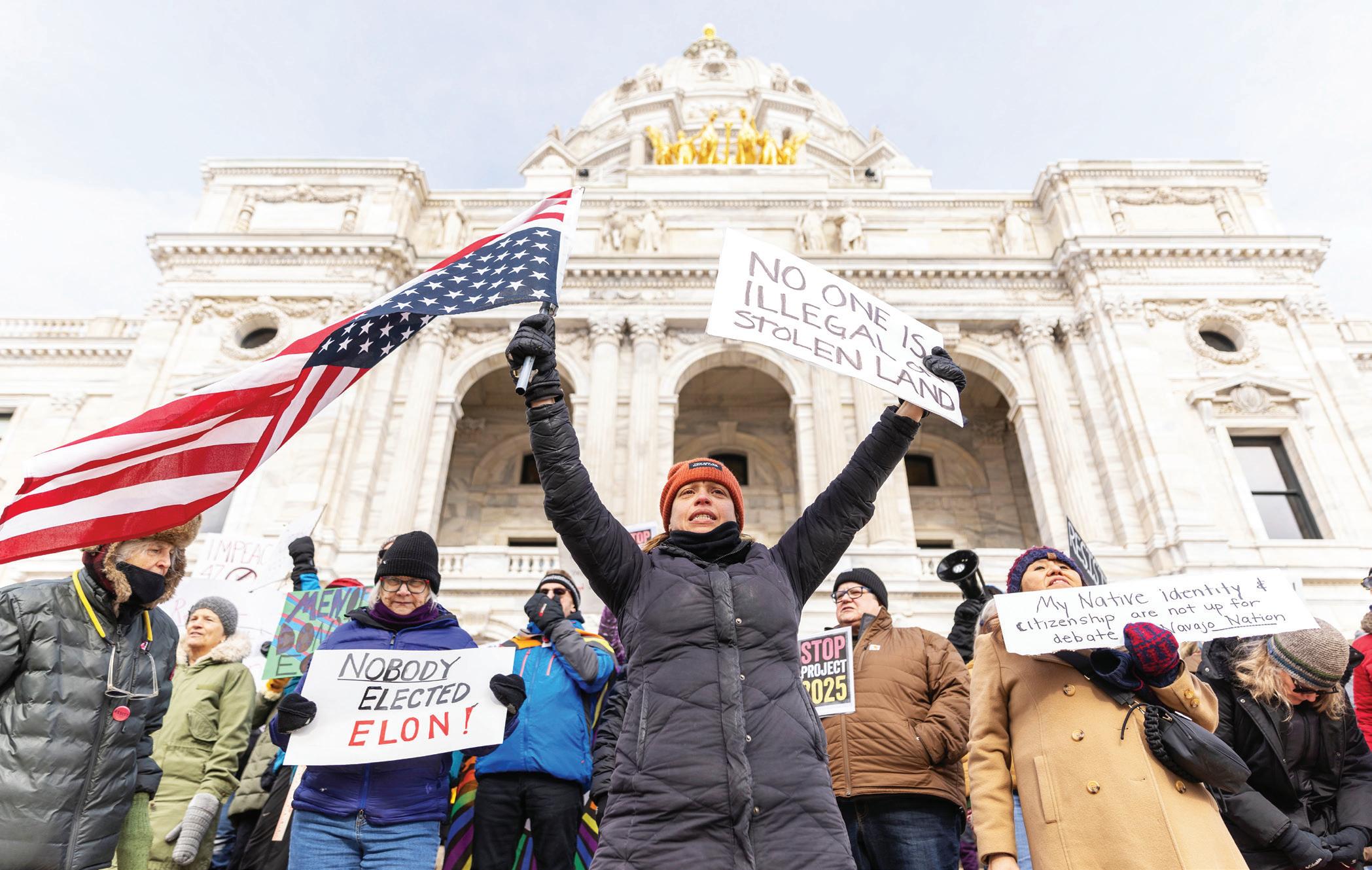
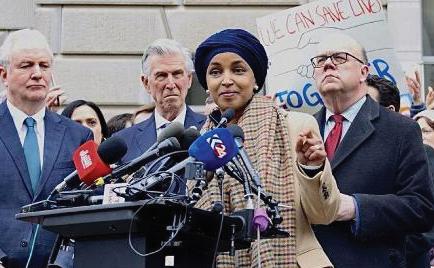
By Clint Combs Contributor Writer
ep. Ilhan Omar is once again at the center of a storm of racist tweets and online backlash after a recent interview with a Somali reporter at Norway House in Minneapolis, where she emphasized key rights that individuals have when approached by ICE.
“If ICE attempts to question you, you are not obligated to answer their questions,” subtitles on the video read, sparking a campaign intended to distract from the core issues: the rights of migrants — whether documented or undocumented — and the ongoing lawsuits against Elon Musk’s team.
The controversy intensified when Ian Miles Cheong shared a video of the interview on Twitter, claiming Omar was “conducting seminars for Somalians who are living illegally in the U.S. without documentation, providing guidance on how to evade deportation.”
The video has garnered over 60 million views, amplifying
the controversy with accusations that Omar was “breaking the law” and offering advice on how to evade deportation.
“I had to crawl my way into Congress. I think these idiots who buy their seats have no idea what a privilege it is to be a member of Congress and what it takes.”
A federal judge signed an order on February 6 temporarily restricting the Elon Muskheaded Department of Government Efficiency (DOGE)’s access to certain federal systems. This move comes amid ongoing controversies around Musk’s department and his role in the immigration debate. Musk’s supporters, including his online followers, have capitalized on the viral video to fuel further animosity, claiming that Omar was encouraging illegal activities. Former Trump campaign
staffer Greg Price shared the video, stating, “Ilhan Omar is now hosting workshops for Somalians living in the country illegally to advise them on how to avoid being deported.”
Rep. Brandon Gill, a freshman congressman, reposted Price’s tweet, suggesting, “America would be a better place if @ IlhanMN were deported back to Somalia.”
Omar responded sharply, calling out those questioning her status as a member of Congress. “How stupid you have to be to be a member of Congress and think your colleague who is a member of Congress can be deported,” she told Politico. “What a dumb**s.
I’m not a nepo baby. I had to crawl my way into Congress. I think these idiots who buy their seats have no idea what a privilege it is to be a member of Congress and what it takes.”
“Our office has been inundated with calls throughout the week,” Jacklyn Rodgers, Omar’s spokesperson, told the Minnesota Spokesman-Recorder. The congresswoman’s
■ See OMAR on page 7
By Aswad Walker
any African Americans have expressed worry about a potentially perilous four years under President Donald Trump. To that point, nationally renowned attorney Ben Crump called for an often underappreciated force to come to Black people’s rescue—the Black press.
Specifically, Crump called on The National Newspaper Publishers Association (NNPA), a national association of African American newspaper publishers, to be Black people’s “North Star.”
“As we come upon this new year, now more than ever, we’re gonna need the leadership of the NNPA to lead our Black community,” said Crump, who viewed that leadership coming in the form of providing unfiltered, truthful hard news to combat potential dangers.
Crump’s NNPA call
“To all the [NNPA members] and executives across the country, I say now is our time to stand up and be counted. History will ask the question, ‘Where were you when they tried to roll back our civil rights, when they tried to destroy diversity, equity, and inclusion (DEI), and when they try to say to our children that Black history doesn’t matter? Where were you?’”
Crump added that NNPA members must be ready to confront individuals, Black people, lawmakers and others who turn their backs on the needs of the Black community.
“This time in history, we must challenge [the] souls of Black people every opportunity we get. Because there will be some people who would take the path of least resistance, and we have to be ready to call them out,” he said.
Crump is not the only one sounding the alarm about
Trump’s actions. Even before Crump’s charge to Black media, multiple Black media members have used their platforms to keep the general public, and Black people specifically, up to date on the barrage of Trump executive orders impacting Black people.
Trump-era challenges New York Times-bestselling author, TV and film producer, and former CNN political commentator Keith Boykin recently spotlighted the eight different goals of the federal
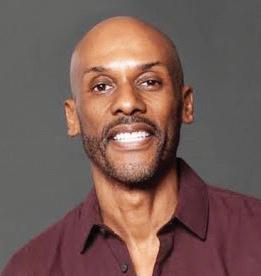

By Clint Combs Contributing Writer
Robbinsdale School Board
Chair Sharon Brooks resigned on February 3, 2025, following a period of controversy, where equitable funding efforts and power dynamics were called into question.
According to legal documents obtained by MSR, Brooks, a vocal advocate for student voices and district policies, continuously advocated for the board’s approval regarding funding that benefitted the district’s communities of color — to no avail.
Brooks also asked the board to approve her attendance at a Council of Urban Boards of Education (CUBE) conference held in October 2024, an event dedicated to improving the landscapes of school communities like those in our metro areas. The document shows a response dated April 29, coupled with another board member who is also Black, Helen Bassett
“We will discuss and vote for both you and Director [Helen] Bassett regarding board member travel during a time of $20 million worth of cuts and a moratorium on out-of-state, professional development
travel for staff. Happy to put that on the agenda,” said Chair ReNae Bowman, who recently resigned.
Brooks was recorded requesting Chair Bowman not to “conflate the two issues or we will need to discuss the many concerns occurring in Robbinsdale Area Schools (RAS) during your tenure as chair. Such as the millions and millions and millions of dollars allocated to our district and the low, low, low academic scores as the outcome.
“Or maybe we will discuss the minimum moratorium on out of state [professional development] PD for staff vs the large amount of approved administrative travel cost that is still conducted. But not right now. My request for [professional development] PD is simple, it’s in accordance with our policy and I am following procedure,” wrote Brooks according to documentation.
Brooks was denied approval for the CUBE conference on May 20. Brooks also had her stipend reduced by $1,950 to $5,850 after being censured December 6 by the board. Despite this, she says she remained engaged in policy development until her resignation following accelerated
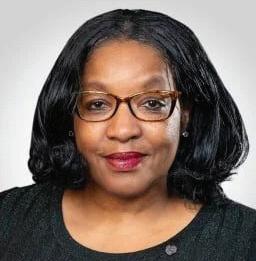
tension that transpired after an argument on June 11 with Board Treasurer John Vento, who has also resigned.
According to the legal report, Brooks questioned why the new version of Policy 598 (Early Entrance to Kindergarten) —which had been updated on May 20, 2024 — had not been posted to the district’s website during a board meeting. Documentation confirms witness reports of Brooks asking Vento if he’s frustrated and
Vento responding, “Yes, I’m fu***king frustrated.”
Brooks asked him to watch his language, and Vento proceeded to curse and yell. Brooks responded: “I am not your child, I am not your dog, and I am not your slave — watch how you are talking to me!”
According to the legal documents, former board chair ReNae Bowman provided testimony in Vento’s favor.
In Brooks’ resignation let-
ter, she stated, “It has been my sincere pleasure to serve as a school board director for the wonderful students of the Robbinsdale Area Schools, District 281. Agenda topics regarding the $20 million budget error, student academic achievement, and safety & security throughout the district must be priorities for the school board.”
Her resignation follows a contentious period on the board. Prior to her resignation, following being censured, she wrote a letter to the Brooklyn Park-Brooklyn Center Sun Post criticizing former board member John Vento. In her letter, she raised concerns about Vento’s failure to publicly apologize for explicit language used in a policy committee meeting and his lack of response to the district’s $20 million budget shortfall during his tenure as board treasurer. She noted that Vento’s apology, issued five months later, failed to address the broader fiscal issues facing the district.
A June 14, 2024, email from Brooks to the full school board further highlighted the conflict. Brooks wrote, “I am glad that Policy 598 was just posted for everyone to publicly view on our website! This was
the action that I spoke in favor of doing in our Tuesday Policy Committee Meeting and John Vento was vehemently against it, unnecessarily cursing me in his argument to wait for AP 598 to be completed...”
In response, former board chair ReNae Bowman emailed Brooks on June 15, questioning her email’s intent and accusing her of violating open meeting laws. Bowman wrote,
“You have sent an email to the entire board which you know is in violation of the open meeting laws regarding the Policy Committee meeting. Do you have a specific ask, or is it your intent to just disparage other board members through blind copy emails?”
Bowman also provided an eyewitness account of the June 11 meeting, asserting that Vento attempted to explain the delay in posting the policy, but Brooks became argumentative and refused to accept reasonable explanations. Bowman placed responsibility on Brooks for escalating the situation and urged her to focus on constructive efforts rather than personal disputes.
The investigation did not find sufficient evidence to
■ See BROOKS on page 3
During Black History Month, we honor leaders who consistently dedicate themselves to uplifting and supporting their communities. Through their tireless efforts, they preserve the legacy of those who came before and pave the way for future generations to thrive.
Join us in celebrating fashion entrepreneur Ngozi Okaro, STEM leader Dr. Calvin Mackie, Jamie Aranda, a resilient Air Force veteran, and astronaut Ed Dwight as part of our Everyday Excellence campaign. Their drive and achievements inspire us all, serving as powerful reminders that success is within reach for those who strive for it.






Find career resources to support your own everyday excellence at aarp.org/work
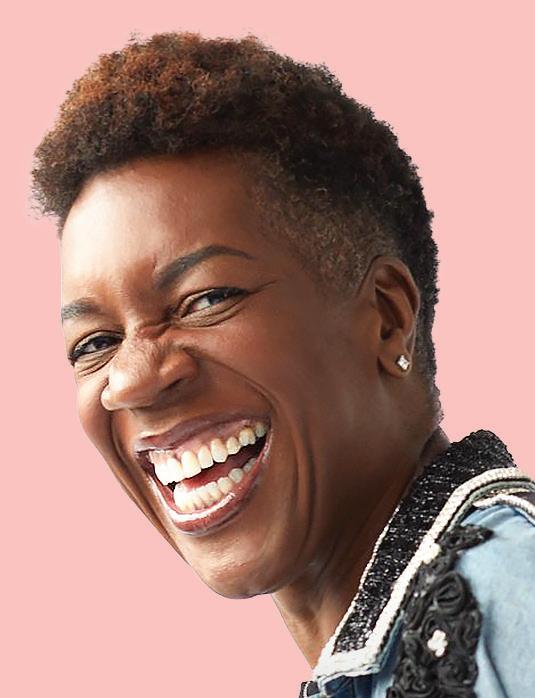





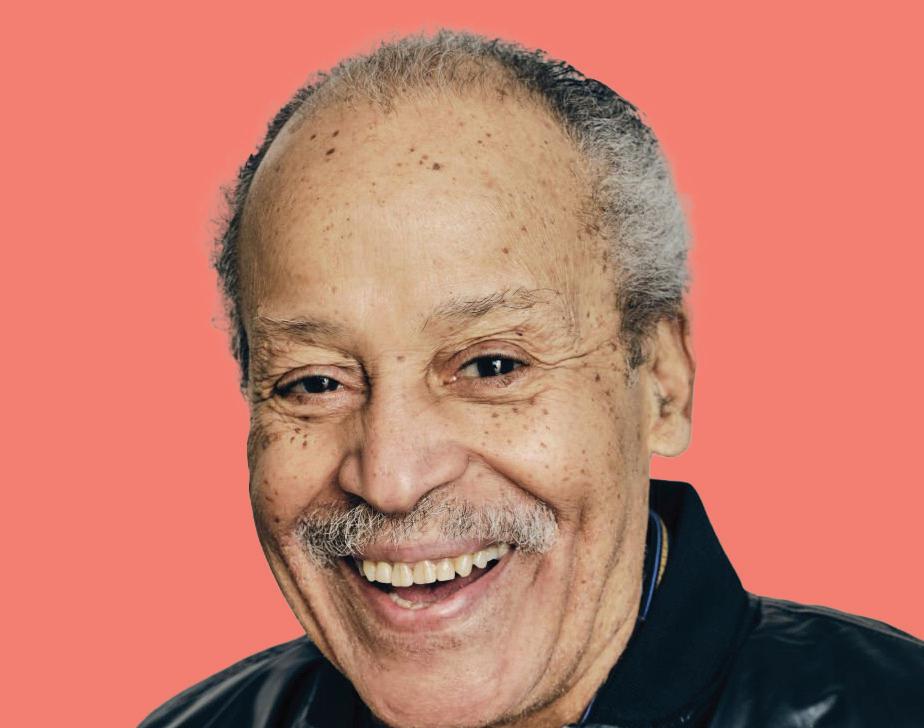


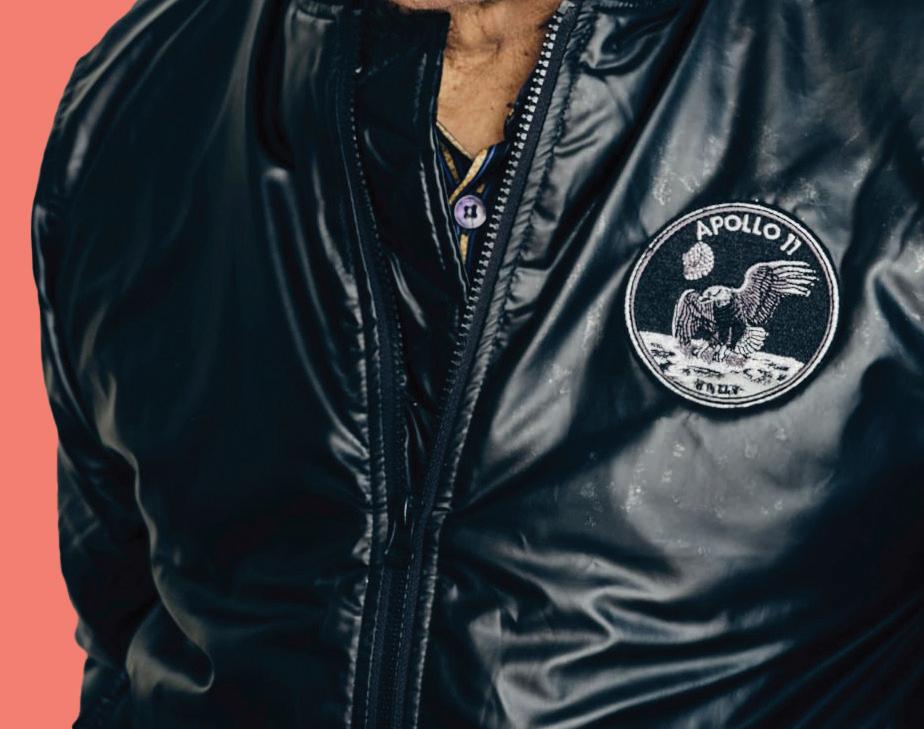









Continued from page 2
categorize the incident as a physical act of aggression on behalf of Vento or to determine that his actions were motivated by Brooks’ race, gender or age. However, the racial aspect remained a significant factor in the conflict, as Brooks, a Black woman, and Vento, a White man, were central figures in the dispute.
While Vento’s conduct was deemed inappropriate, the findings concluded there was insufficient evidence to establish that his actions were racially motivated.
These developments raise broader questions about power dynamics, race and conflict within the Robbinsdale School Board. The findings suggest a complex interplay of communication breakdowns, personal grievances, and institutional challenges, with both directors contributing to the confron-
tation. The resolution of the investigation will likely have lasting implications for board relations and accountability.
Adding to the district’s challenges, last October, S&P Global Ratings downgraded Robbinsdale Area Schools’ credit rating from ‘A-’ to ‘BBB’ due to financial deterioration, weak financial management, and projected budget deficits.
This downgrade signals potential financial instability, leading to higher borrowing costs and reduced resources for students.
If the district’s financial outlook continues to decline, further downgrades could impact funding for school programs and services.
“We just heard about your bond rating,” said Nick Waldspurger of Squires, Waldspurger & Mace, P.A. “In 30 years, I’ve never heard an auditor comment on a bond rating because of interpersonal dynamics among school board members.”
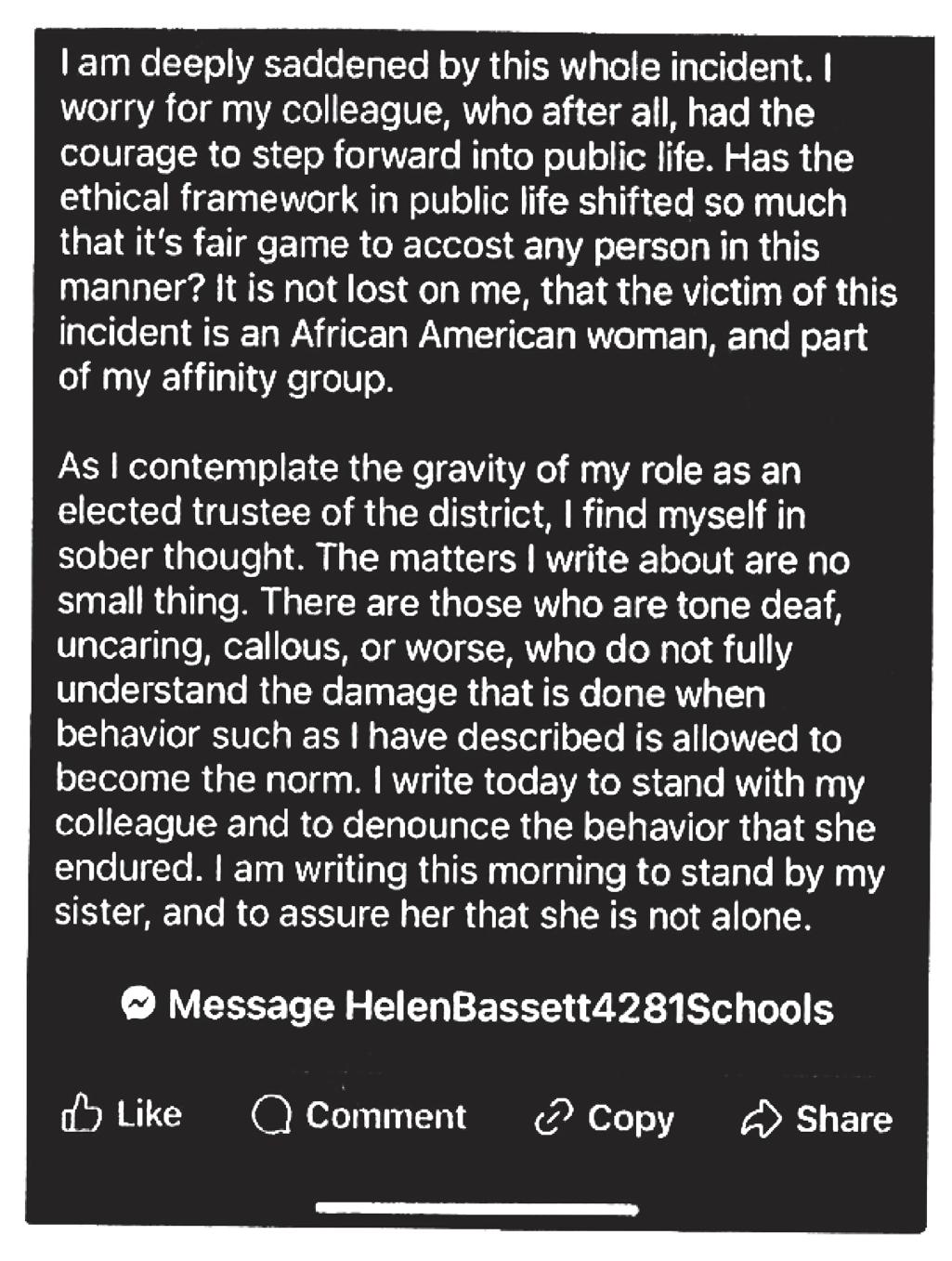
Board Member Helen Bassett expressed concerns about the accuracy of the report’s implications. “From my view, this board and the district have a lot of work to do to regain credibility,” Bassett said.
“The only way to do that is by being honest, open, and transparent.”
“From my view, this board and the district have a lot of work to do to regain credibility.”
“On the matter of this report,” Bassett continued, “I am ready to move forward, but not without stating publicly that some of the comments made in the report were assertions that were not true.”
body’s world,” she asserted.
A female colleague of Bassett’s was allegedly accosted during a district business meeting by a male board member in what has been described as a vulgar and threatening manner, according to public records obtained by MSR.
“The shameful behavior was unchallenged in that moment, except as requested to stop by the victim,” Bassett wrote.
“As I contemplate the ramifications of this behavior, my mind is grappling with the implications for the culture, climate, and ethical framework of those who condone such behavior.
MSR reached out to board members Greta Evans-Becker, Caroline Long, ReNae Bowman, Aviva Hillenbrand, and Kim Holmes for comment, and received no response.
“I have a concern about where this is headed,” Waldspurger continued. “It’s headed to litigation. Guess what’s going to happen in litigation?
ance coverage, because you’re going to be found to be not acting in good faith.”
Bassett also raised due process concerns, stating that she was not interviewed on key issues and was not given access to statements made about her before they were published.
You’re not going to have insur-

“That’s not due process in any-
Clint Combs is a contributor to the Minnesota SpokesmanRecorder. Find him on Twitter @ Combs0294. You can also send Combs news tips on the Signal app @Combs0294.
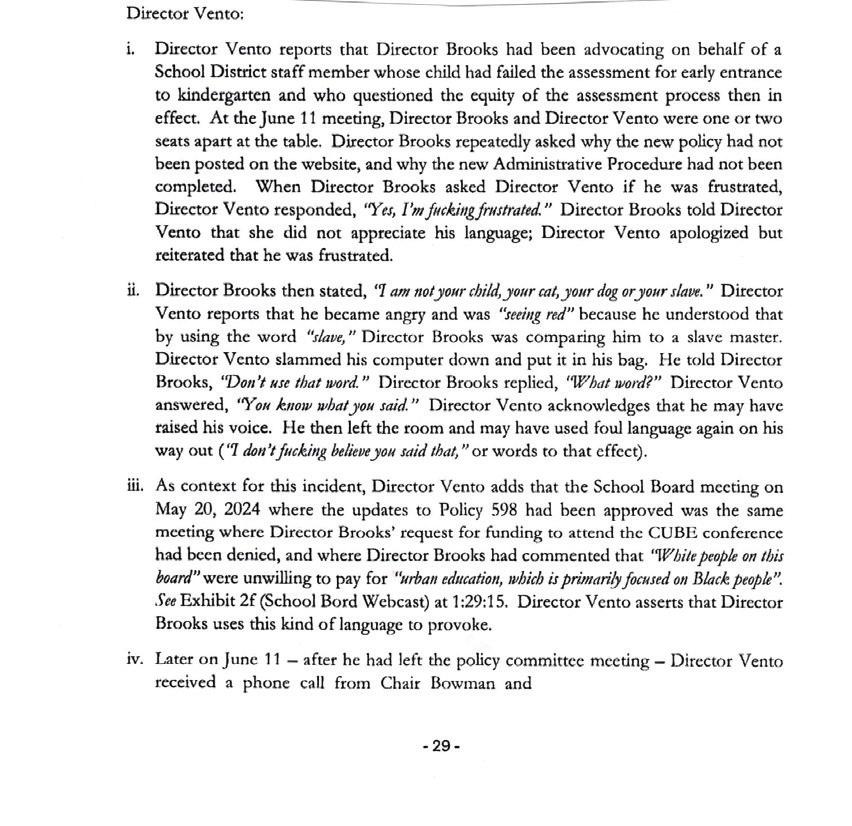

By Clint Comb Contributor Writer
The Racial and Ethnic Approaches to Community Health (REACH) program, funded by The Centers for Disease Control and Prevention (CDC), aims to improve the health of Black people — and other residents of color — in Minneapolis by addressing two key issues: chronic disease prevention and vaccinations. Jennie Meinz leads the chronic disease prevention efforts, focusing on nutrition and physical activity, while Luisa Pessoa-Brandao oversees vaccination initiatives.
The REACH Program is slated to end in 2028, which — amidst current DEI trajectory changes following the executive orders of President Trump — has raised concerns about the future of federal funding.
In 2024 alone, the program delivered 1,775 vaccinations — including 635 flu, 582 Mpox, 518 Covid-19, 22 Tdap, and 18 MMR vaccines — across 87 clinics and 73 outreach events. These outreach efforts were key in reaching communities and educating over 1,800 people about preventative care.
“We’re excited to move projects from our design and assessment phase to full implementation,” said PessoaBrandao. “However, there’s some uncertainty around the amount of federal funding that we may continue to receive in the coming years.” Minneapolis was awarded $1 million in 2023, and $900,000 in 2024, under the REACH grant. However, funding for the next three years remains uncertain with expected reductions, especially for vac
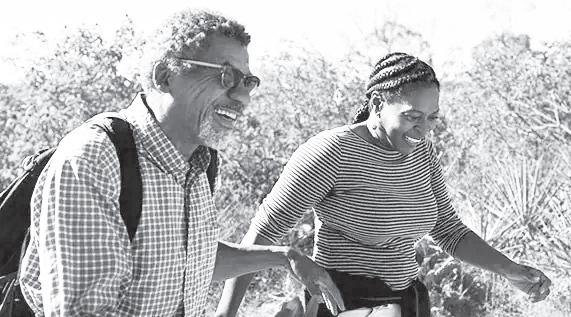
cine efforts. This uncertainty has raised concerns, particularly as the program relies heavily on funding to support staff and community initiatives. Currently, REACH funds six full-time positions split between both chronic disease prevention and vaccination efforts.
Meinz echoed PessoaBrandao’s concerns, stating, “Years three, four and five are a little uncertain. We typically get our funding announcement in September, and we do anticipate further reductions in the vaccination area.”
Beneficiaries of CDC grant funding were instructed to end support for diversity programs due to President Trump’s Executive Orders. It remains unclear whether the REACH program will be impacted by these directives.
“We are monitoring the decisions and litigation at the federal level. It’s too early to speculate on what will happen to our funding,” said Scott Wasserman, communications manager for the city’s public health department. Despite these challenges,


the REACH program has made significant strides in improving access to healthy foods, promoting physical activity, and offering breastfeeding support. Through its nutrition efforts, the program has partnered with BrightSide Produce and the Native American Community Clinic to deliver fresh produce to patients experiencing food insecurity or chronic disease. Since September 2023, 184 patients have participated in this initiative, and the program plans to expand to five clinics and/or hospitals by 2028.
“Our doorstep delivery of fresh produce is impactful because it simultaneously addresses both food security and public health by providing clients with a reliable source of fresh, healthy food,” said Justa Heinen-Kay, co-director of BrightSide Produce. “Our doorstep delivery overcomes barriers like transportation and limited hours at food shelves.”
“Our doorstep delivery overcomes barriers like transportation and limited hours at food shelves.”
Southside Community Health Services and the People’s Center Clinics and Services also collaborate in delivering produce prescriptions.
To promote physical activity, the REACH program has partnered with the Native Youth Artist Collective to design and install 10 wayfinding signs along key streets in the Little Earth neighborhood. These signs, designed by youth art-
ists, aim to improve pedestrian safety and encourage physical activity while representing local culture.
Breastfeeding support is another central component of the program. Through collaborations with the Cultural Wellness Center and the Division of Indian Work, REACH is working to improve breastfeeding rates in Native American and Black communities.
The program aims to train at least 35 health care providers in hospitals and clinics by
51% of Hispanic mothers. Despite this, efforts to promote breastfeeding have helped narrow the gap over the years.
The REACH program also benefits from partnerships with organizations like the Fairview Health System, which launched a Food Resource Navigator position in
are exploring additional sources of support to ensure the continued success of these initiatives.”
Council Member Robin Wonsley of Ward 2, whose district is home to a culturally diverse student base, expressed her enthusiasm about the REACH grant’s impact. “Peo-


2028, and establish at least five lactation-friendly health care sites in Minneapolis by 2028. Recent data from the Community and Child Health Study indicates that Black infants are breastfed for shorter periods compared to Hispanic infants.
According to the latest U.S. National Immunization Survey, only 66% of Black mothers initiated breastfeeding in 2012, compared with 83% of white mothers and 82% of Hispanic mothers. At six months, only 35% of Black mothers were still breastfeeding, compared to 55% of white mothers and
June 2024 at Riverside Clinic to help connect patients to food assistance programs like “Market Bucks,” a part of the Farmers Market Nutrition Program. To date, 103 patient consultations have been made, with 161 referrals to food assistance programs.
While uncertainties about future funding persist, the REACH program remains committed to its mission. “Our goal is to create sustainable, longterm improvements to the health of Minneapolis’ Black and Native American communities,” said Meinz. “While federal funding may fluctuate, we
ple in recent years have really gotten excited about how to bring art hand-in-hand together,” she said. “I know there’s been, at least throughout my tenure, some resistance around linking those two. It’s innovative work.”
Council Member Jeremiah Ellison of Ward 5 also applauded the efforts of the REACH program, acknowledging the challenges faced by those working in health disparities. “I want to acknowledge that you guys are doing this in the context of a lot of misinformation and uncertainty,” Ellison said.
“I never thought we’d be in a situation where this kind of work would have a little bit of an existential threat to it.” Ellison continued: “I want to acknowledge you guys are doing an incredible job,” he paused. “We need this work more than ever, as people, I don’t know, are eating more bare meat and raw milk, or whatever.”
Clint Combs is a contributor to the Minnesota SpokesmanRecorder. Find him on Twitter @ Combs0294. You can also send Combs news tips on the Signal app @Combs0294.




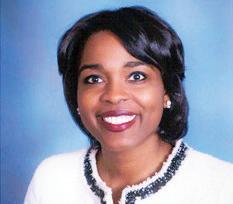


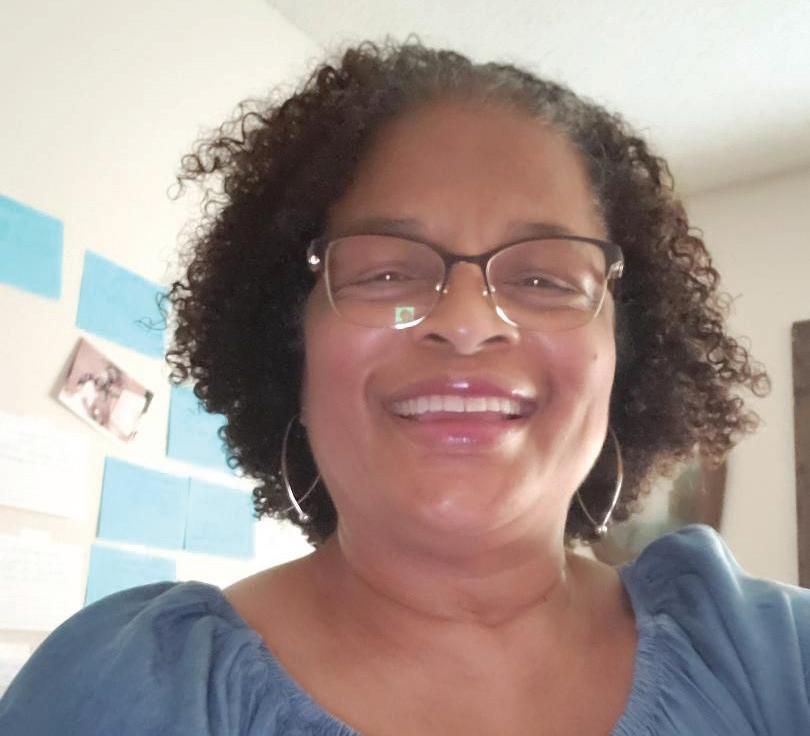

is a heart health and wellness program led by Mayo Clinic cardiologist Dr. LaPrincess Brewer and aims to address heart health disparities faced by African-Americans. Dr. Brewer and her team are partnering with churches in the Rochester and Twin Cities metro area to study the impacts of a culturallytailored smartphone app and digital health equity toolkit on heart health in the African-American faith community. These participating churches and their Digital Health Advocates (DHAs) have committed to promoting heart health and digital health equity by joining the Techquity by FAITH! study:

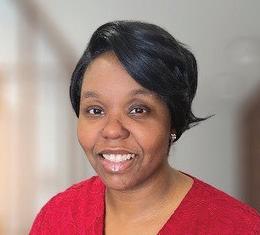
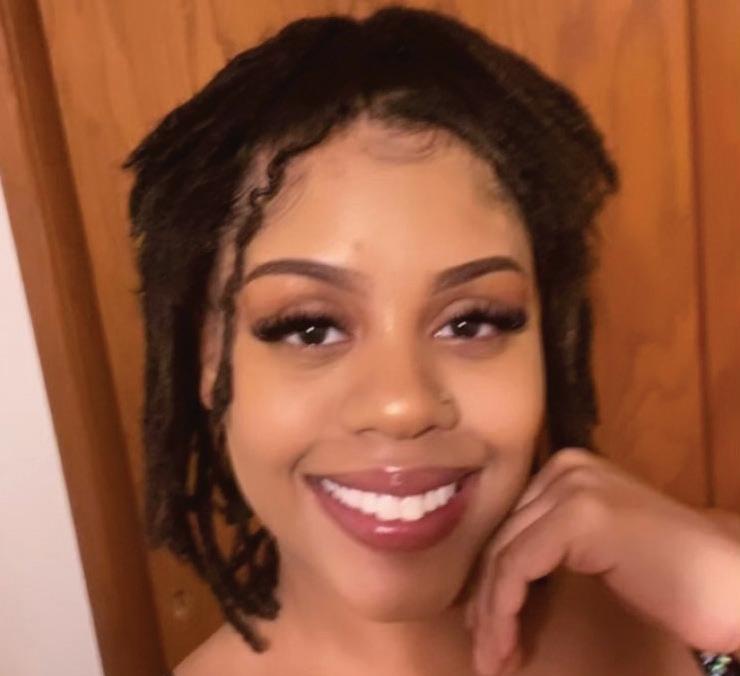

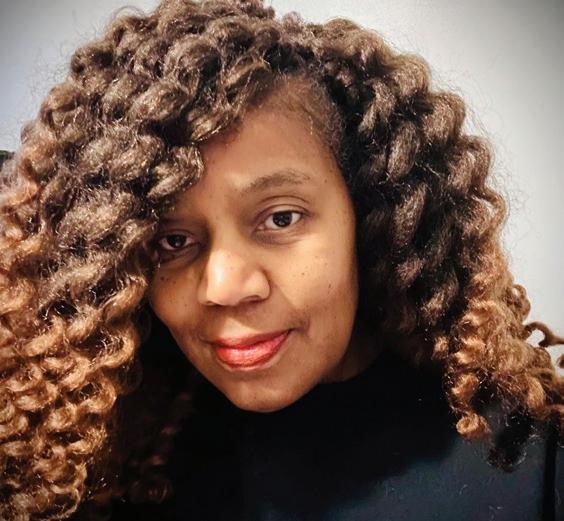
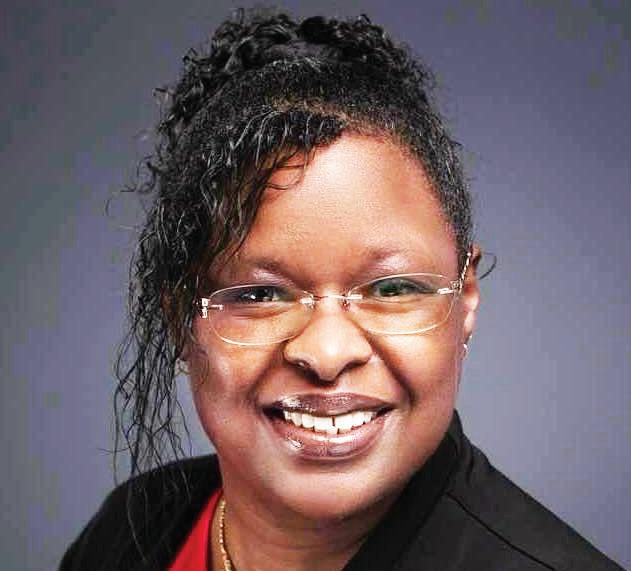

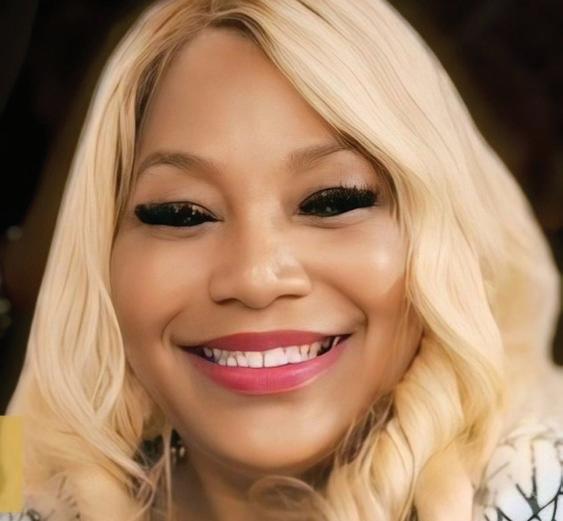
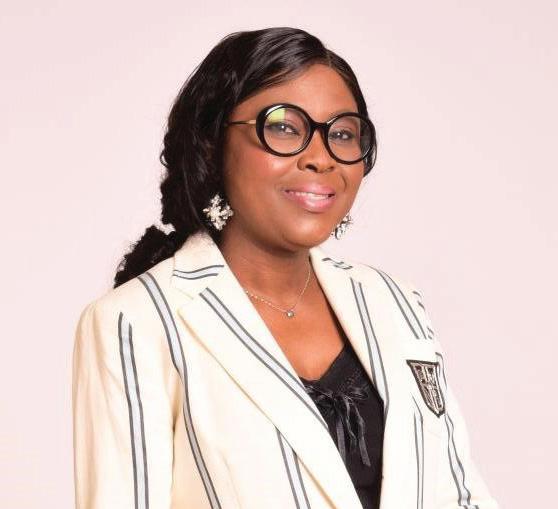

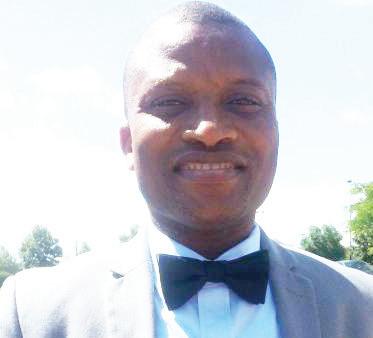
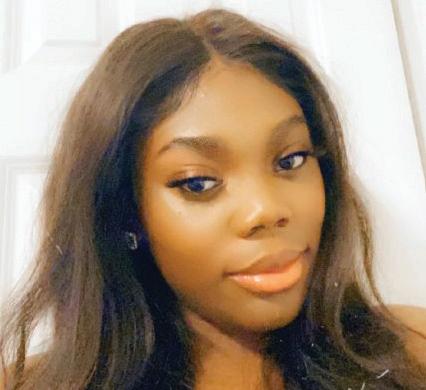
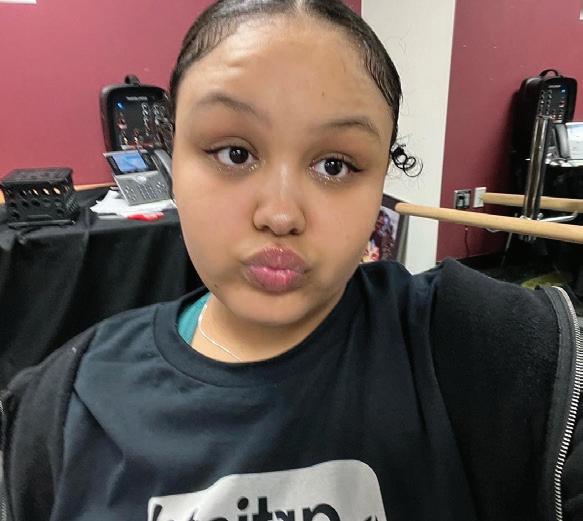
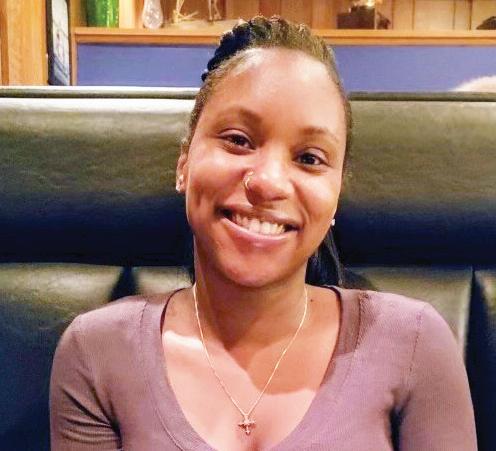
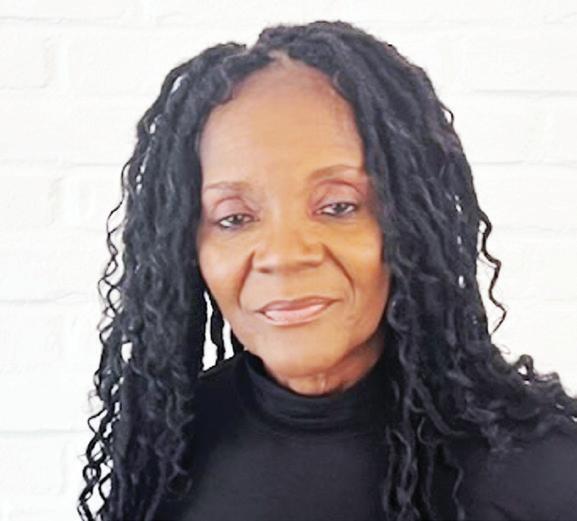


By Kiara Williams Staff Writer
On February 3, and for the third year in a row, the Minnesota State Capitol was the site of a powerful convening of Black entrepreneurs, activists, and community leaders, all determined to carve out a sustainable future for (their) Black businesses. The event was organized by children’s author Sheletta Brundidge with a clear purpose: to get Black business owners in front of their legislators, ensuring their voices are heard by the elected officials who are responsible for shaping policies that affect their
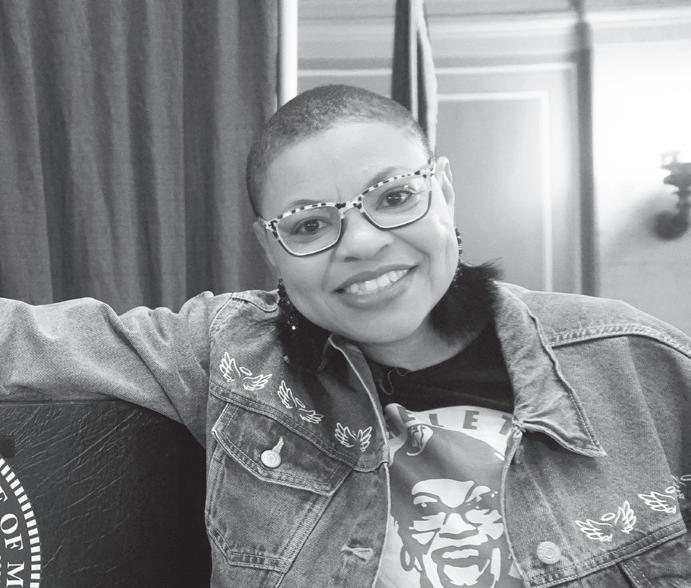
Collective support makes cooperative economics possible
The concept of cooperative economics has long been a pillar of the Black community, shaping historical moments of economic empowerment, such as Black Wall Street.
While these thriving hubs once flourished, the challenge today is finding a path back to that level of collective success. Today, the pressing question remains: How do we reclaim that legacy?
Business owners and community leaders emphasize that reclaiming this legacy requires intentional support and strategic action. Black businesses must be deliberate in how they support and market to one another, ensuring that community values remain at the forefront.
Economic empowerment is not just about individual success but also about collective upliftment, a principle echoed by Cara Deanes, executive director of Roho Collective. She emphasizes the importance of turning communal ideals into tangible action.
“We often use the quote ‘It takes a village,’ but [it’s about] putting that
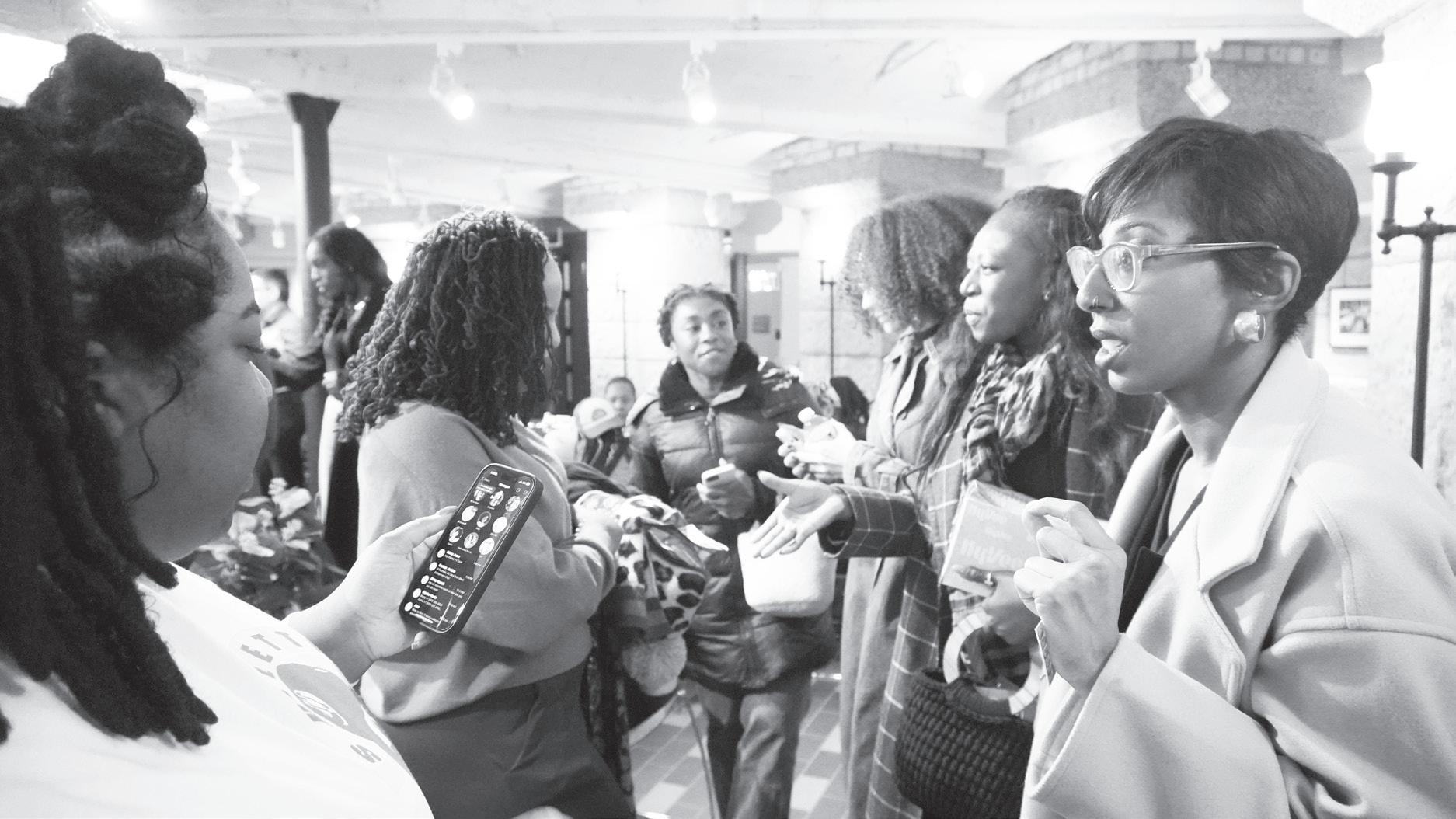
to action in a very real way,” Deanes said. “Every step that we take first starts at home — looking at businesses that are right around the corner, entrepreneurs that live right next to us. How do we support one another and build money and infrastructure into our own community?”
This sentiment is further rein
forced by The Dream Shop owner
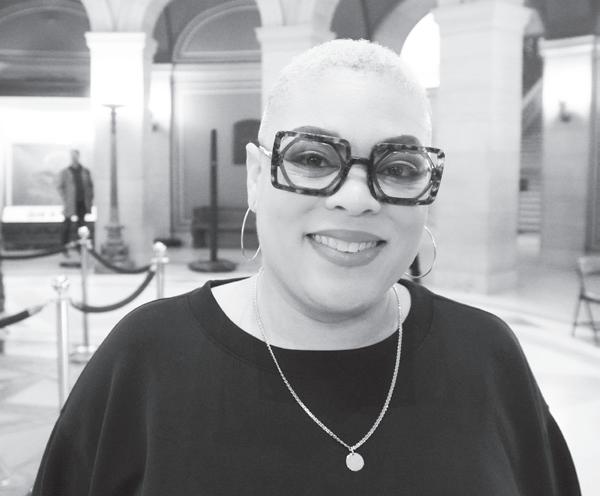
Markella Smith, who underscores the responsibility of those with access and resources to uplift others, particularly in a time when economic boycotts and shifting consumer hab-
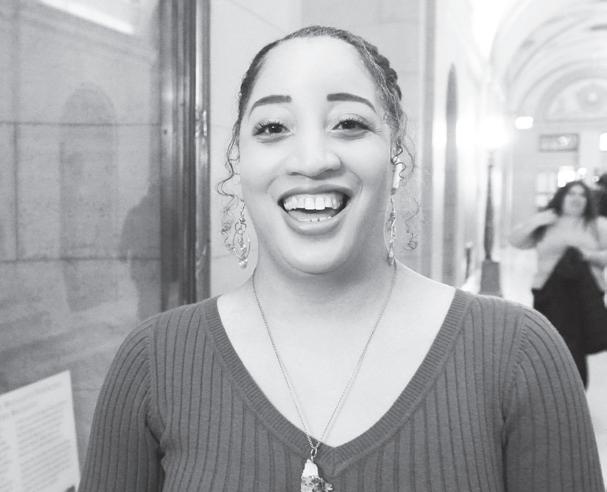
its demand stronger community networks.
“I think being supportive of where people are at, not making them feel guilty, but asking yourself, ‘How do you, as a person with access and who has the means, help someone else?’
The people who have the means have to possibly go out of their way to help their neighbors who don’t have access,” Smith said.
Rebuilding economic strength within the Black community requires a mixture of empathy, mutual respect, and a commitment to collaboration.
The power of the Black dollar
Another major theme of the con -
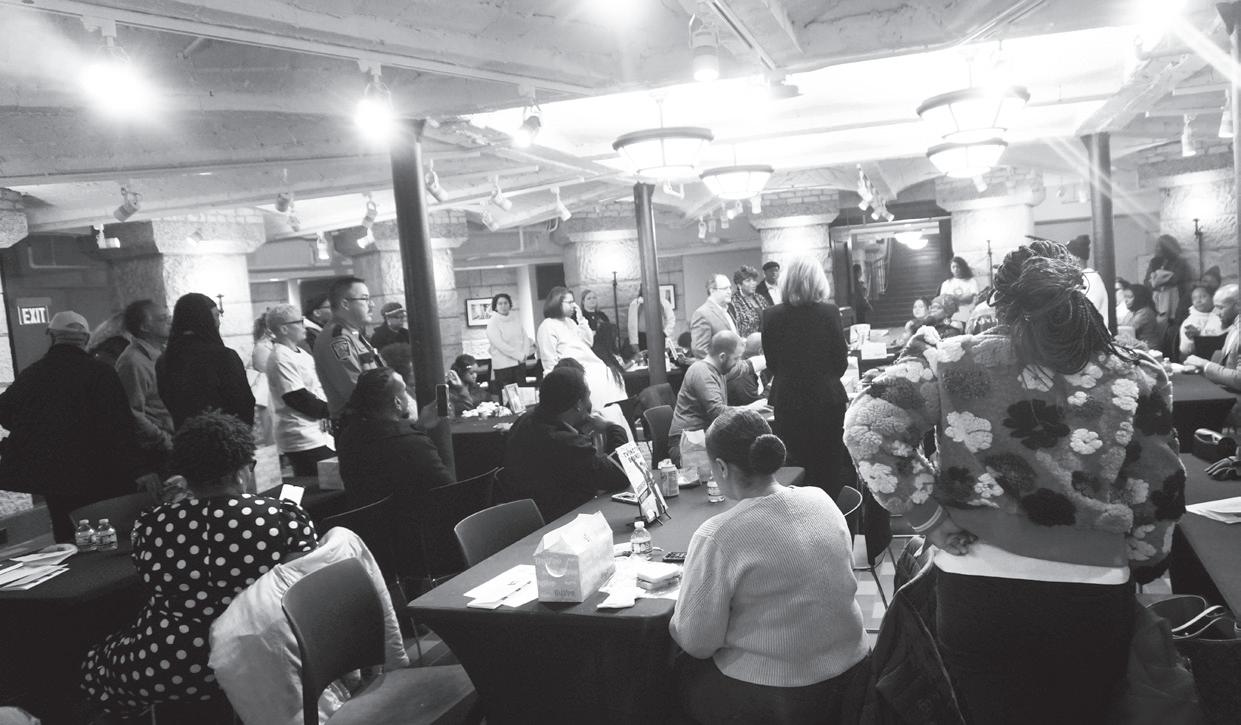

“I think that we as the people need to move quietly, right?” Smith said.
“We’re so loud about what we’re doing, but our money talks. So yeah, it’s cool — let’s boycott, let’s cancel this and let’s cancel that, right?
“But how much more powerful is it if we do it quietly? How much more powerful is it if we actually are intentional again with supporting our businesses? Like, I have a whole gift shop — you shouldn’t be going to Target in the first place, right? So how are we again being intentional about really spending our dollars amongst our own businesses and our own people?”
Sheletta Brundidge, event host and founder of ShelettaMakesMeLaugh.com, also emphasized that economic independence is critical.
“We have enough money as Black buyers to support each other, and we can all get rich.
versations in the Black community has been the concept of strategic boycotting in 2025 following President Trump’s executive orders to retract DEI policy, which aligns with the broader conversation around cooperative economics. Rather than simply protesting companies that have abandoned DEI commitments, the focus is on creating lasting economic shifts by building a culture of intentional Black consumerism.
Historical precedent underscores the power of collective economic action. The Montgomery Bus Boycott, led in part by Dr. Martin Luther King Jr., lasted 381 days from December 5, 1955, to December 20, 1956. Black residents of Montgomery, Alabama, refused to ride segregated city buses, demonstrating the strength of unified financial resistance. Their dedication resulted in a landmark Supreme Court ruling that deemed segregation on public buses unconstitutional. The boycott not only reshaped civil rights policy, but also highlighted how Black economic power could drive systemic change.
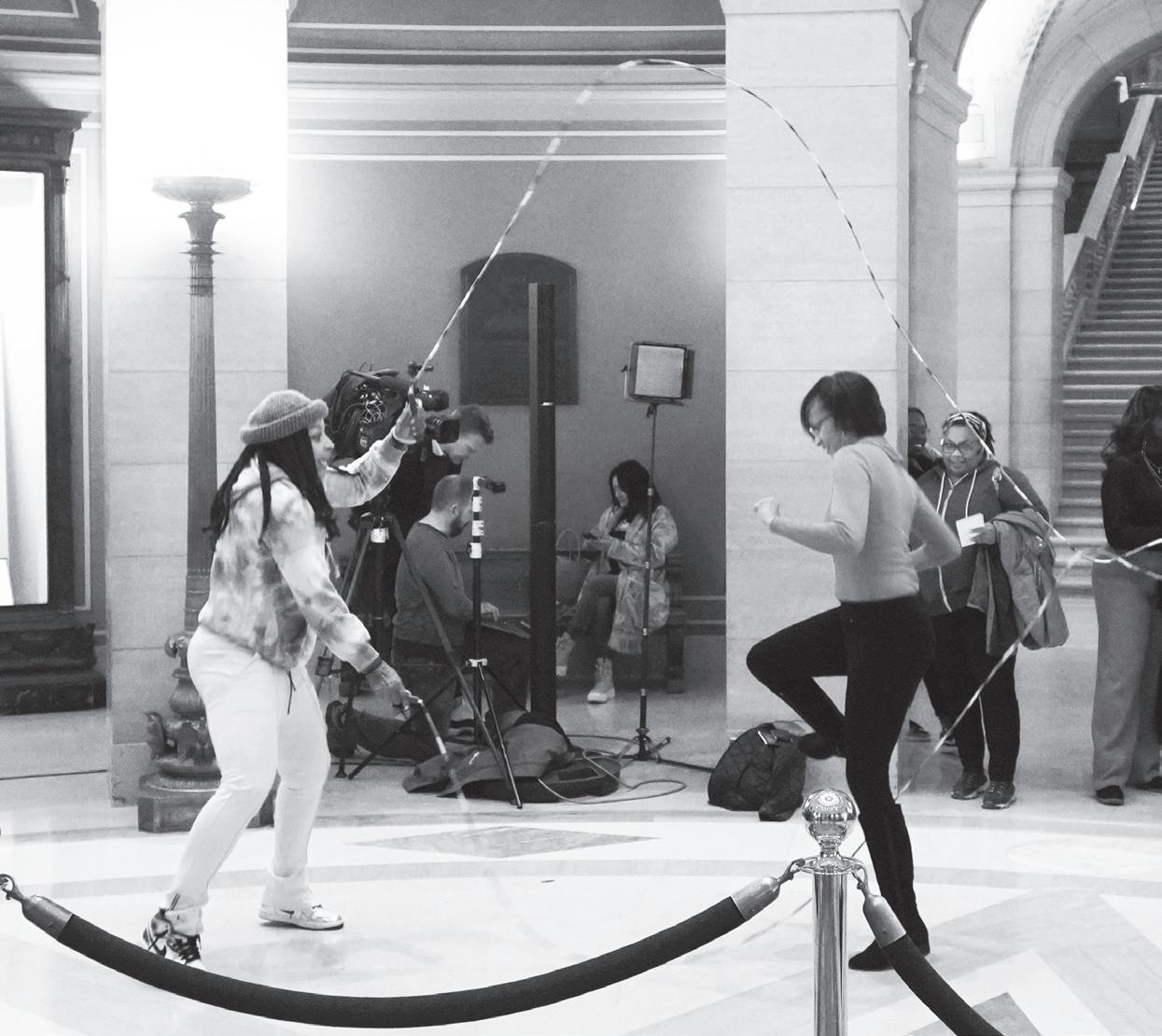
“We’ve gotten complacent. We gotta go back to the way we used to do things. We gotta go back to the old school, ‘cause we can no longer afford to sit back and wait for things to change. We have to pivot, and to me, that pivot looks like doing more together,” Brundidge said.
Real estate agent Michael Roberts echoed this sentiment, highlighting that financial empowerment requires a shift in how Black consumers approach wealth-building.
“Someone once asked me, ‘When are Black folks going to be on top again?’ to which I responded, ‘As soon as we start investing as much as we’re consuming.’ We are only as strong as our weakest link.”
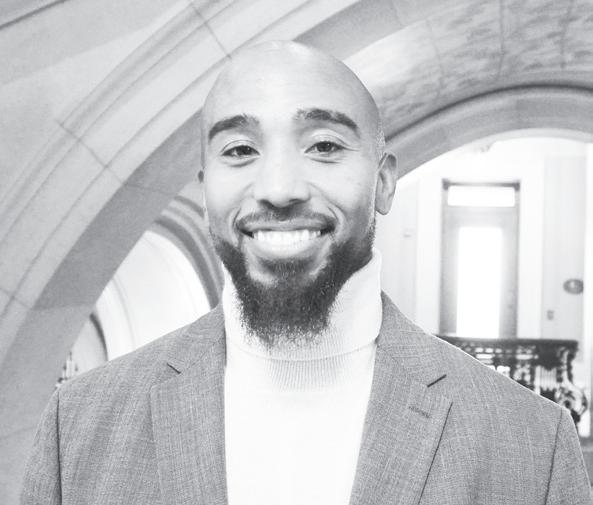
He also stressed that homeownership is a crucial path toward economic stability, as housing expenses [on average] make up 30-40% of the average American’s income. Rather than solely renting, he encourages individuals to make their housing costs work for them by building equity. The call to action is clear: Rather than waiting for external policies to dictate economic outcomes, Black consumers must take control of their financial choices and direct them toward businesses that actively invest in their communities. The success of past boycotts serves as proof that sustained, strategic economic action can bring about real change.
Kiara Williams welcomes reader responses at kwilliams@spokesmanrecorder.com.

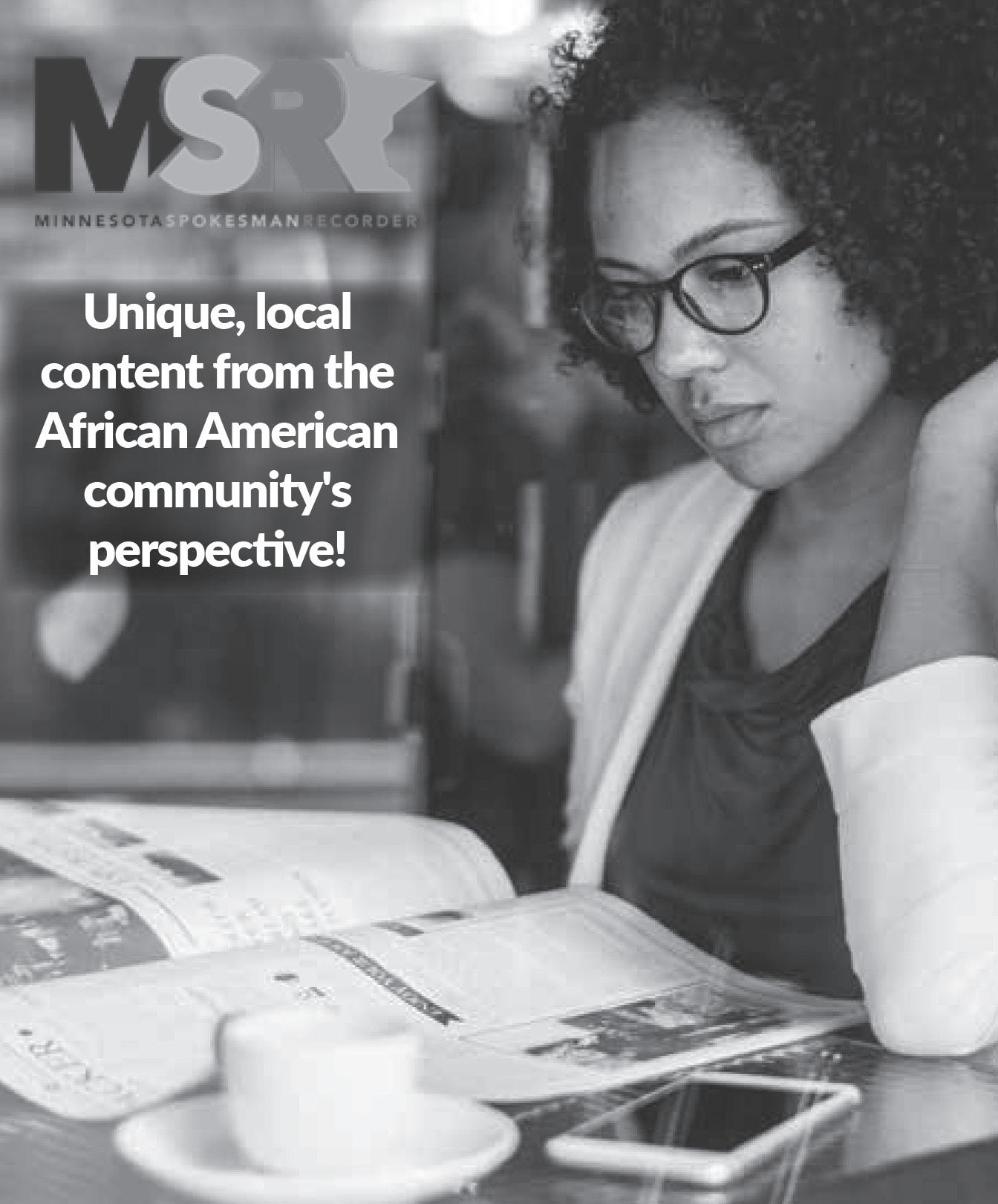
Continued from page 1
and dire warning. Marquise, 34, a longtime Saint Paul resident, gripped a sign reading “Protect Black Futures” as he spoke passionately about the plan’s implications.
“Trump’s plan is a direct threat to our democracy and civil liberty,” he said. “It’s a fight between politics and survival. Black folks, queer folks, immigrants… We’re all in danger if this plan moves forward. We should all be concerned.”
During his campaign trail, Trump distanced himself from the conservative policy plan known as Project 2025 — calling it ridiculous — though now he’s singing a different tune. Weeks into his presidency, Trump enacted policy reformation along with personnel layoffs and terminations, dissolved specific agencies, and enacted data deletions referencing LGBTQIA+ youth accompanying CDC pages with HIV statistics.
Focused on the danger to LGBTQIA+ rights and immigration, people carried signs stating, “No one is illegal on stolen land,” and “Protect LG-
“Trump’s plan is a direct threat to our democracy and civil liberty.”
The 2025 plan, crafted by Trump allies and conservative think tanks, principally the Heritage Foundation, promises an aggressive overhaul of federal policies. Among its most alarming proposals are the expansion of executive power, deep cuts to government programs, and the potential repeal of key civil rights protections. Activists argue that Black Americans, along with LGBTQIA+ and immigrant individuals, would bear the brunt of these changes.
Continued from page 1
office has received an overwhelming number of calls following the viral video, surpassing the phone calls that came in after Ron DeSantis posted on Twitter: “Expel from Congress, denaturalize and deport!” Rodgers explained. That supposed uproar followed a video that was selectively edited and mistranslated last year.
Meanwhile, the spotlight on Omar comes amid ongoing legal tensions involving Musk’s DOGE. This department is currently facing numerous lawsuits from Democratic attorneys general, who seek to block Musk’s efforts to access sensitive federal payment systems, further complicating the national conversation around immigration and governmental overreach.
Right-wing defenders of Musk’s actions are pushing a false narrative that he is legally empowered to control federal
Continued from page 1
DEI program Trump demonized and ended.
1. Data collection, to give us a better understanding of who is and isn’t in the federal workforce;
2. Paid internships, which provide valuable opportunities and experience for people from underserved communities;
3. Recruitment, so that the government doesn’t just hire the usual suspects but posts job announcements in places where other people can see them;
4. Professional development, so that once people are hired they can continue to expand their skills and become better workers;
5. Fair treatment of people with disabilities, so that they can get a job and find appro-

BTQ+ rights,” with the worry about the potential rollback of protections for the queer and immigrant population in workplaces, schools, and health care settings.
Despite the protest’s clear focus on racial justice, some attendees noted the limited presence and potential voice of Black community members. When asked to interview about the protest in tow, most offered no comment. While many were aware of the demonstration and were glad to
agencies, which distracts from the critical issues of immigrant rights and the growing legal challenges Musk’s team is facing. While Musk and his team of online supporters continue to capitalize on the viral moment, immigration activists in the Twin Cities have been hosting workshops focused on educating the immigrant community about their rights when dealing with ICE. One such seminar, organized by the Minnesota Immigration Rights Action Committee (MIRAC), saw a full turnout with participants traveling from as far as Wisconsin to attend.
MIRAC’s workshop emphasized critical legal advice for those approached by ICE. Attendees were reminded that individuals have the right to remain silent and refuse searches of their person or home unless ICE has a compelling warrant.
This right applies whether approached by ICE agents at home, at work, during a traffic stop, or as part of a broader immigration raid.
priate accommodations;
6. LGBT fairness, so that spouses and families of LGBT employees get the same benefits as other families;
7. Pay equity, to review government policies, hiring and salaries to make sure that women and people of color aren’t being paid less to do the same jobs; and
8. Opportunities for formerly incarcerated individuals, to review barriers so that qualified job applicants who have served their time get a fair shot at getting a job.
“These are not radical, illegal or immoral ideas,” said Boykin. “These are calls to the highest principles of America, with the stated goal that all employees are treated with dignity and respect.”
Like Boykin, and true to Crump’s call, Word In Black reporter Jennifer Porter Gore has reported on Trump’s
support the protest by showing up, some voices stayed silent. However, the Black voices that showed up articulated a powerful message.
Marcus, 29, a local Black entrepreneur, stressed the economic consequences of the proposed policies. “This plan would gut resources that Black families rely on — homeownership programs, small business funding, education grants,” Marcus exclaimed.
“It’s Jim Crow in a suit and tie. We’ve fought too hard for economic stability and continue to fight for it [only] to have it ripped away overnight. A lot of Black people are tired.
Importantly, ICE agents typically carry administrative warrants, which are different from criminal search warrants signed by local judges for evidence collection in criminal investigations.
In addition to MIRAC’s workshop, grassroots organizations in the community are also pushing back against the misinformation. Erika Zurawski, a member of MIRAC, a volunteer-based advocacy group, spoke out about the need for stronger immigrant protections.
“MIRAC is an all-volunteer grassroots organization, right?
We’re comprised of individuals who get together to oppose unjust laws and policies attacking immigrants and also to fight for, you know, positive changes in policies, whether that be on the local, state or national level,” she explained.
Zurawski also discussed how her organization is helping people navigate the fear and anxiety that comes with current immigration policies:
“We work with individuals who have removal cases pending
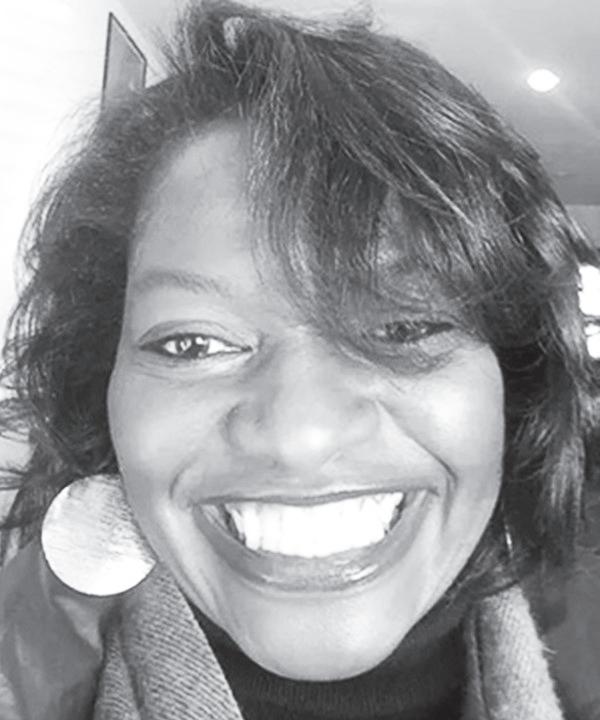
moves that carry with them potentially deadly ramifications for Black people.
“In a flurry of executive orders signed just hours after he took office, President Donald Trump rescinded a Biden administration order on prescription drugs — a move that could hike drug prices for millions of Medicare and Medicaid enrollees,” reported Gore.
We’ve been protesting, we’ve been voting, and yet we’re still here fighting the same fight our grandparents did,” Marcus continued. “Some people don’t see the point anymore, but most of us are not going to stop fighting.”
For those who did attend, there was an urgency in their voices. A determination not to let history repeat itself. As the rally continued, protesters made it clear that their opposition would not fade with the winter sun. They vowed to keep organizing, to keep resisting, to keep pushing back against what they see as a dangerous authoritarian shift.
“This isn’t about Trump,” Marcus said as he led another round of “We Stand Together” chants. “It’s about the people behind him. The ones who want to take us backward… We’re not going back!”
He was referring to rightwing Elon Musk, who protesters say share the presidency with Trump’s administration and garners support for the 2025 project. With signs in tow stating: “We did not elect Elon Musk,” the echoes of the protest lingered as the crowd slowly dispersed; but the fight, many insisted, was far from over. Amid the passionate speeches and rallying cries, a lone fig-

in immigration court, or had them before, and they were able to get them dismissed under the Biden administration.
“And we work with communities — whether that be undocumented or documented —
“At the same time, Trump also reversed Biden’s efforts to make it easier for people to enroll in Medicaid or to get insurance coverage under the Affordable Care Act.” That Trump move could prove fatal on a large scale for the just over seven million Black people who have health coverage through Medicare.
or various levels of temporary status here in the U.S. who, at all levels, are terrified right now. Including permanent residents,” she paused.
“Even permanent residents feel like their status isn’t safe
A different kind of danger to Black people was alluded to via a social media post celebrating Trump’s Jan. 20 inauguration by the Proud Boys, an identified white domestic terrorist organization. The group, known for threatening and engaging in violence against Black people, posted: “There are no more safe spaces.”
“There’s a fourth branch of government. It is called the independent press.”
Another Black press member, Roland Martin, recently discussed how many of the Project 2025 projections are already coming to pass, including Trump’s move to end birthright citizenship, an amendment to the U.S. Constitution that granted citizenship to formerly enslaved Black people and their future kin born in the U.S.
Black Press needed Crump told NNPA members during his address that Black people can’t rely on mainstream media to keep us informed about weighty issues like those mentioned.
“There’s a fourth branch of government. It is called the independent press. And I’m not counting on MSNBC. I’m
ure stood apart from the crowd, just beyond the Capitol steps. Wearing a red MAGA hat, he remained silent, observing but not engaging with the demonstrators. Some protesters attempted to approach him, eager to debate or at least understand his presence. But the man offered no words, no arguments, no defense of the plan being denounced by the crowd. Asked why he decided to attend the anti-2025 MAGA protest, he had no comment.
Aria Binns-Zager welcomes reader responses to abinns@ spokesman-recorder.com.
enough, and are concerned that something could happen under this Trump administration.”
Colleen Riley from MIRAC also highlighted the growing demand for immigrant rights education, noting the overwhelming interest in their upcoming training sessions: “I believe we are full because of the large amount of interest in our next training session for Know Your Rights issues.
“However, we will continue to hold additional ones coming up in March. We might be in other cities in Minnesota, like Rochester and Red Wing even. Please watch our social media.”
The ongoing national conversation around ICE rights continues to shape the debate in Minnesota, as activists work to educate and support immigrants who feel their safety is at risk.
Clint Combs is a contributor to the Minnesota SpokesmanRecorder. Find him on Twitter @ Combs0294. You can also send Combs news tips on the Signal app @Combs0294.
not counting on CNN. I’m not counting on Fox News. Me and my house, we will count on the NNPA to be our fourth branch of government. To make sure that we get information that is hard-hitting facts and it’s not watered-down, it’s not orchestrated, it’s not manipulated. But it is the information to help us be unapologetic defenders of Black life, of Black liberty, of Black culture,” said Crump. Crump added that the NNPA has the power to “well arm” Black youth with intellect, diplomacy, and strategic thinking to protest the prison industrial complex, voter suppression, denial of access to quality health care and denial of access to capital.
Aswad Walker is associate pastor of the Shrine of the Black
and a lecturer in the University of
ment of
financial landscape.
By Stacy M. Brown
President Donald Trump’s sweeping tariffs on Canada, China and Mexico — America’s largest trading partners — have already begun to rattle markets and consumers. The policy, which imposes a 25% tax on all imports from Canada and Mexico and a 10% tariff on Chinese goods, is being framed as an aggressive move to curb migration, drug trafficking, and China’s role in fentanyl production.
However, the economic consequences are already being felt, with financial markets in turmoil and everyday Americans bracing for price hikes in critical sectors such as fuel, food and automobiles.
Financial expert Allan Boomer, a seasoned Wall Street veteran with more than two decades of experience, discussed the economic fallout in an interview with the Black Press. Boomer, who spent years advising institutional clients and managing multimillion-dollar investment portfolios at Goldman Sachs before founding his firm Momentum Advisors, assessed the current
“The markets are constantly moving,” Boomer said. “The Dow was down a bunch earlier today, but it’s already rebounding somewhat. Still, what the market is really bracing for is an all-out trade war.”
Boomer pointed to the deep economic ties between the United States and its neighboring trading partners. “Mexico and Canada each send more than 80% of their exports to the United States, and retaliatory tariffs from these countries could have severe consequences,” he said.
“The ultimate loser in this situation is the consumer. Ultimately, this results in higher prices.” Gas prices in the Midwest have already risen by as much as 50 cents per gallon, as Canada and Mexico supply over 70% of crude oil imports to U.S. refineries. The auto industry is also seeing immediate effects, with tariffs threatening to add as much as $3,000 to the price of some vehicles.
Meanwhile, grocery costs are expected to rise, as Mexico supplies more than 60% of America’s vegetable imports
and nearly half of its fruit and nut imports. “We’re going to feel this in Black and brown communities,” Boomer said.
“Any community that spends money as a high percentage of their wealth — whether Black, white, or Latino — is going to be hit hard. But for Black and brown people, who statistically spend the most as a percentage of wealth, the impact is going to be severe.”
Boomer questioned the broader strategy behind Trump’s trade policies, noting that while the administration touts these tariffs to strengthen the U.S. economy, the reality may be different. “This is a president who said he would strengthen the United States at the expense of our partners,” Boomer said.
“But what you’re seeing is that it’s really at our own expense. We import a bunch of things — lumber, oil, tequila, avocados — and these tariffs have big knock-on effects in our economy on a day-to-day basis.”
Trump has positioned tariffs as a tool to pressure Canada and Mexico to make policy concessions. “Trump is looking
By Stacy M. Brown
As Black History Month begins, newly updated data from LendingTree has again revealed the persistent racial economic disparities in the United States, covering income, wealth, savings, employment, credit and retirement. The findings illustrate the ongoing and deep financial inequities between Black and white Americans, despite progress in some areas.
Income and employment
The median income for Black households in 2023 was $56,490, compared with $84,630 for white households, a 33.3% gap and an increase from the 31.6% gap in 2022.
Full-time Black workers earned a median weekly wage of $962 in the third quarter of 2024, 18.8% less than white workers, who earned $1,184.
The wage gap is more severe in certain industries, particularly agriculture, where full-time Black workers earned an average of 40 cents for every dollar their white colleagues made.
In terms of employment, Black adults experienced greater financial instability due to job losses. Between August and September 2024, 16% of Black adults reported losing employment income in their household over the previous four weeks, compared to 10.3% of white adults.
The “last-hired, first-fired” trend remains a factor in employment patterns, with Black unemployment rates consistently higher than those of white workers. As of December 2024, the unemployment rate stood at 5.6% for Black men and 5.4% for Black women, compared to 3.3% and 3.4% for white men and women.
Wealth disparities
Black Americans hold significantly less wealth than white Americans. As of the third quarter of 2024, Black Americans held $5.39 trillion, just 3.4% of the country’s total wealth, while

white Americans controlled $134.58 trillion, or 84.2%.
The gap in median net worth between Black and white families widened to $240,210 in 2022. Although Black families saw a 57.8% increase in their median net worth between 2019 and 2022, the overall disparity remains overshadowed by financial gains.
LendingTree’s chief credit analyst, Matt Schulz, noted that while percentage-based growth in Black families’ net worth may appear substantial, it reflects the significant difference in starting points. “It’s a lot easier to have high-percentage growth when starting with a low-income number than when starting with a bigincome number,” Schulz said.
Savings and banking Financial security remains a challenge for many Black households. In 2023, 14% of Black adults were unbanked, compared with just 4% of white adults. Black Americans were more than twice as likely to incur overdraft fees, with 19% reporting such charges compared to 9% of white Americans. Additionally, 42% of Black adults reported having at least three months of emergency savings in 2023, compared with 59% of white adults.
Credit and loan disparities
Access to credit also remains uneven. In 2023, 65% of Black adults with a family income below $50,000 were denied
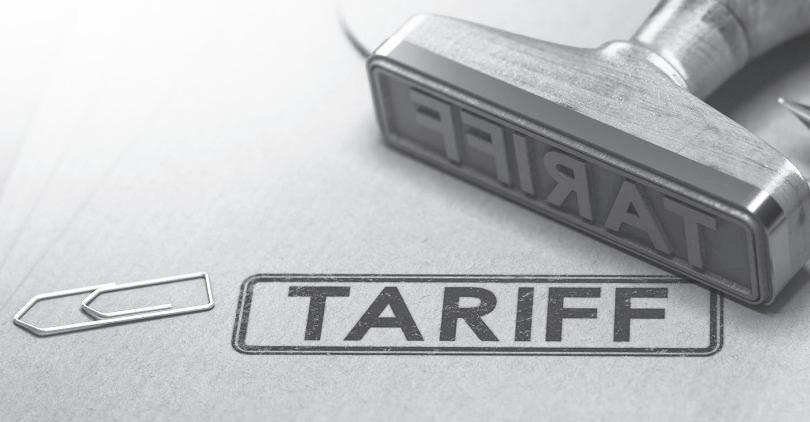
to leverage these tariffs for some sort of win,” Boomer said. “For example, he’s pointing out that U.S. banks can’t operate in Canada, and he’ll try to push for some small victories, but the question is, does anyone care?”
With markets in flux and fears of an economic downturn growing, Boomer advised investors to think long-term. “You can’t invest just for today — you have to invest for tomorrow and for 10 years down the road,” he said.
“Right now, we’re in a really challenging political climate, but in the next two years, with the midterms, we might see a backing off of these extreme positions.” Boomer encouraged
those with lower incomes, all other things being equal.”
Retirement readiness
Black families are also less likely to have retirement savings. In 2022, 34.8% of Black families had a retirement account such as a 401(k) or IRA, compared with 61.8% of white families. The median retirement account balance for Black
investors to consider where they put their money.
“I’d be wary of companies that are backing off their DEI (Diversity, Equity, and Inclusion) initiatives,” he said. “I just don’t think companies that aren’t inclusive in hiring are going to do well in the long run.”
He also urged investors to be mindful of who is managing their money. “Am I investing in funds managed by diverse professionals, or am I turning my money over to non-diverse money managers?” he asked.
“These are things people should be paying attention to in this climate.”
National Urban League
President Marc Morial ad-
families stood at $39,000, while white families held a median of $100,000. Additionally, as of 2023, 51% of Black non-retired adults reported having tax-preferred retirement savings accounts, compared with 68% of white non retired adults. Overall, “Black households have less financial margin for error than white households in
dressed broader concerns about Trump’s policies on federal assistance, which could leave millions of Americans without critical support, including food assistance, education funding, small-business grants, and VA benefits for veterans.
“This administration’s reck-
“This is not a blueprint to ‘Make America Great Again.’ This is not putting ‘America First.’ This is leaving millions of Americans behind.”
less action has already stirred widespread chaos and may cause recessionary impacts such as increased poverty, job losses, and economic stagnation,” Morial said. “This is not a blueprint to ‘Make America Great Again.’ This is not putting ‘America First.’ This is leaving millions of Americans behind.”
Stacy M. Brown is an NNPA Newswire senior national correspondent. You can find her on social at @StacyBrownMedia.
many cases because of income disparities,” Schulz said. “This is a big problem anytime, but it’s particularly troubling in times of inflation. Higher prices mean that people have even less wiggle room financially.”
Stacy M. Brown is an NNPA Newswire senior national correspondent. You can reach her on social@StacyBrownMedia.
credit or approved for less than requested, compared with 47% of white applicants in the same income bracket. Even among those earning over $100,000 annually, Black applicants were denied or approved for less at 29%, compared to 13% for white applicants.
A similar gap exists in credit card ownership, with 86% of
“Black households have less financial margin for error than white households in many cases because of income disparities.”
white adults holding at least one credit card in 2023, compared with 70% of Black adults. Schulz pointed to income levels as a contributing factor, noting that banks extend higher credit limits to those with higher incomes, affecting borrowing power and financial flexibility. He recommended using a personal loan to pay off smaller debts.
“As for getting approved for less than requested, there’s no question that income levels play a big role,” he said. “While your income level isn’t factored into your credit score, it’s considered when, for example, banks decide how much credit to extend. People with higher incomes may receive higher limits on credit cards than

By Kiara Williams
Contributor Writer
The stage at Penumbra Theatre pulses with the rhythms of jazz and tension as “Paradise Blue” makes its debut, bringing a story that resonates with many urban communities. This production, rich in music and drama, evokes a ripple effect of emotions among audiences in the Twin Cities.
Written by award-winning playwright Dominique Morisseau and directed by Penumbra’s very own Lou Bellamy, the play runs February 11 through March 9, making it a timely kickoff to Black History Month.
Set in 1949, “Paradise Blue” follows a troubled jazz club owner and trumpeter, “Blue,” as he struggles with internal demons while gentrification looms over Detroit’s “Black Bottom” neighborhood. The play delves into themes of identity, survival, and the many costs of progress.
“Penumbra’s core mission has been to uplift Black voices in the arts,” actor Lester Purry said. “This play does it in such a beautiful way that it shows how art can be empowering to the individual, specifically jazz, y’know, bebop.”
Purry says “Paradise Blue” is more than the story of a musician. He says it is a reflection of every Black community that has had to fight to retain its space and identity in the face of gentrification.
“Any Black actor who’s been here for a while can tell you before Penumbra, most Black actors only worked in February,
for Black History Month, when other theatres would hire them for the February show,” Purry said. “And then Penumbra came along and created something where you could see yourself, you could reflect your own stories and your own experiences in this country.”
He says the production offers audiences a visually striking and emotionally charged experience, immersing them in a jazz-infused world where love, power, and survival collide. The cast, led by Mikell Sapp as Blue and Nubia Monks as Pumpkin, delivers performances that bring to life the raw, human cost of urban transformation.
Playwright Dominique Morisseau, a Detroit native with roots in Mississippi and Haiti, is known for her now Detroit Trilogy, which also includes “Detroit ’67” and “Skeleton Crew.” Her work explores the struggles and triumphs of Black communities facing eco-
nomic and social upheaval.
“With “Paradise Blue,” I wanted to show the weight of choices Black business owners had to make in the face of urban renewal,” Morisseau said in a past interview. “It’s a conversation we’re still having today.”
The play’s themes of displacement, resilience, and cultural identity strongly resonate with the history of the Twin Cities. Gentrification, the process by which urban neighborhoods are transformed through an influx of higherincome residents and businesses, often leads to rising property values and rents that displace longtime residents.
While city officials and developers may argue that infrastructure investments bring economic revitalization, the reality for many communities of color is starkly different.
Historically Black neighborhoods like Rondo in St. Paul, 8 Mile in Detroit, and Treme in New Orleans have faced era-
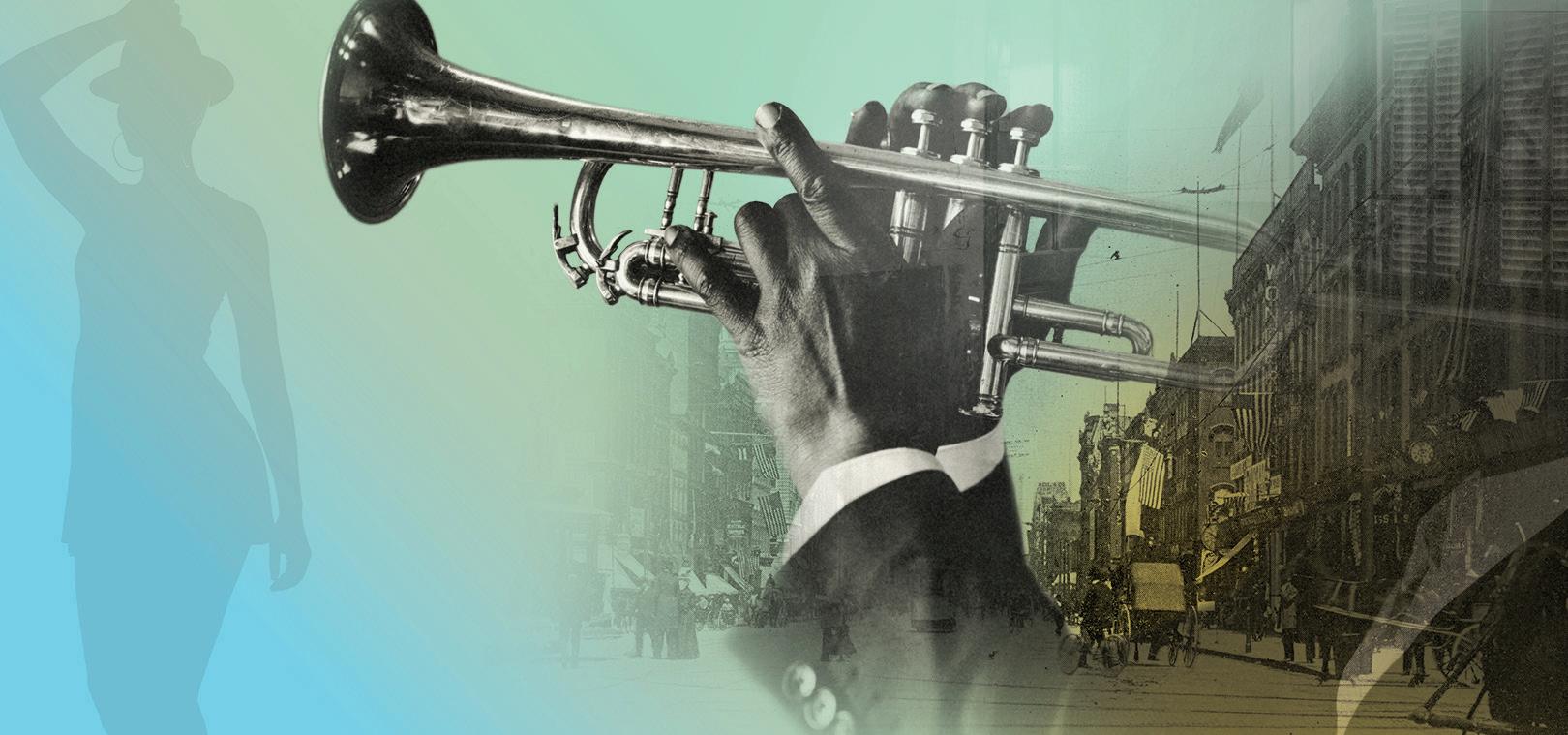
sure as city planning projects, rezoning laws, and commercial development favor wealthier newcomers over the preservation of existing cultural hubs.
Penumbra Theatre, founded in 1976 by Lou Bellamy, has deep ties to St. Paul’s historic Rondo neighborhood — once the heart of the city’s Black community before being devastated by the construction of Interstate 94. Purry says


the connection between the theatre and the storyline highlights how “Paradise Blue” mirrors real-life experiences of communities affected by urban renewal and gentrification.
“We think of art as entertainment, but it can also be revolutionary. It can be society-changing, and that’s what Penumbra does, and that’s why it’s lasted here so long,” Purry added.
Through its artistry, Paradise Blue at Penumbra Theatre serves as both a historical lens and a contemporary conversation starter, urging audiences to examine the impact of gentrification on Black communities nationwide.
Purry emphasizes the play’s emotional depth, stating, “This
“This production showcases the strength, resilience, and the ability to love despite being unloved or not loved fully, as Black women.”
production showcases the strength, resilience, and the ability to love despite being unloved or not loved fully, as Black women.”
The theater will host special post-show discussions on select nights, inviting community members to explore the play’s themes within a broader historical and social context. For those looking to experience a poignant and thought-provoking production that speaks to the heart of American history and culture, “Paradise Blue” at Penumbra Theatre is a must-see.
“Paradise Blue” runs from Feb. 11 to March 9 at Penumbra Theatre, located at 270 N. Kent St. in St. Paul. Tickets start at $5 on a first-come, first-served basis and can be purchased online at penumbratheatre.org/event/ paradise-blue or by calling the box office at 651-224-3180.
Kiara Williams welcomes reader responses at kwilliams@ spokesman-recorder.com.


By Vickie Evans-Nash Contributing Writer
“‘Race,”as we currently carry such a notion in our head, is a myth, a fiction, or a stage of false consciousness,” Professor Mahmoud El-Kati writes in “The Myth of Race: The Reality of Racism.” Over 20 years ago, the Cultural Wellness Center (CWC) created teachings to deconstruct the myth of race and form a new definition of self. In the second of this two-part story, the focus is psychology.
me one day, and you see what happens when I leave my home,” he says. “How people treat me in the grocery store…
I’m not crazy, it’s happening.”
Psychosis? No: the experiences of a Black man living in a racist society.
He saw this attack subtly in college, learning nothing of leading Black thinkers on psychology, his chosen field of study. It sent a message he refused to accept that there was no significant body of knowledge among Blacks on mental health.
He discovered Wade Nobles and Na’im Akbar while writing his graduate thesis. “I had to study them on my own as a result of trying to under-
him to psychology. “I like thinking about what we think about... As I discover that part of myself, what I realize is this is my contribution to our effort.”
He also discovered different types of intelligence: the mind, which is valued as intelligence in the U.S; the gut, or instinct; and the heart. “You aren’t taught that your heart has intelligence in this society,” Tezet explains. “You’re taught that your heart is a liability.
“In an African context, the heart is the seat of intelligence,” he continues. “It is the soul of man. It’s where the creator dwells.”
Racialization is a part of a philosophy of objectification.

tified in a way that has turned humanity against its home.”
Identifying with his culture rather than his race allowed him to rise above victimization. Abandoning the rage, he gained a sense of power.
“I realized what I could do is fully embrace my Africanness,” he says. “I could fully embrace a Black man with a higher intellect. Not in an egoic sense… but to a higher intellect that allows me to say that my heart’s intelligence will trump any kind of objective intelligence that I can face in this society.”
In his role as griot of psychology at CWC, Tezet works to help others gain a better understanding of their cultural identity. “As Black people, what are the things that are underneath our current existence that have allowed us not only to survive but [to] have a life

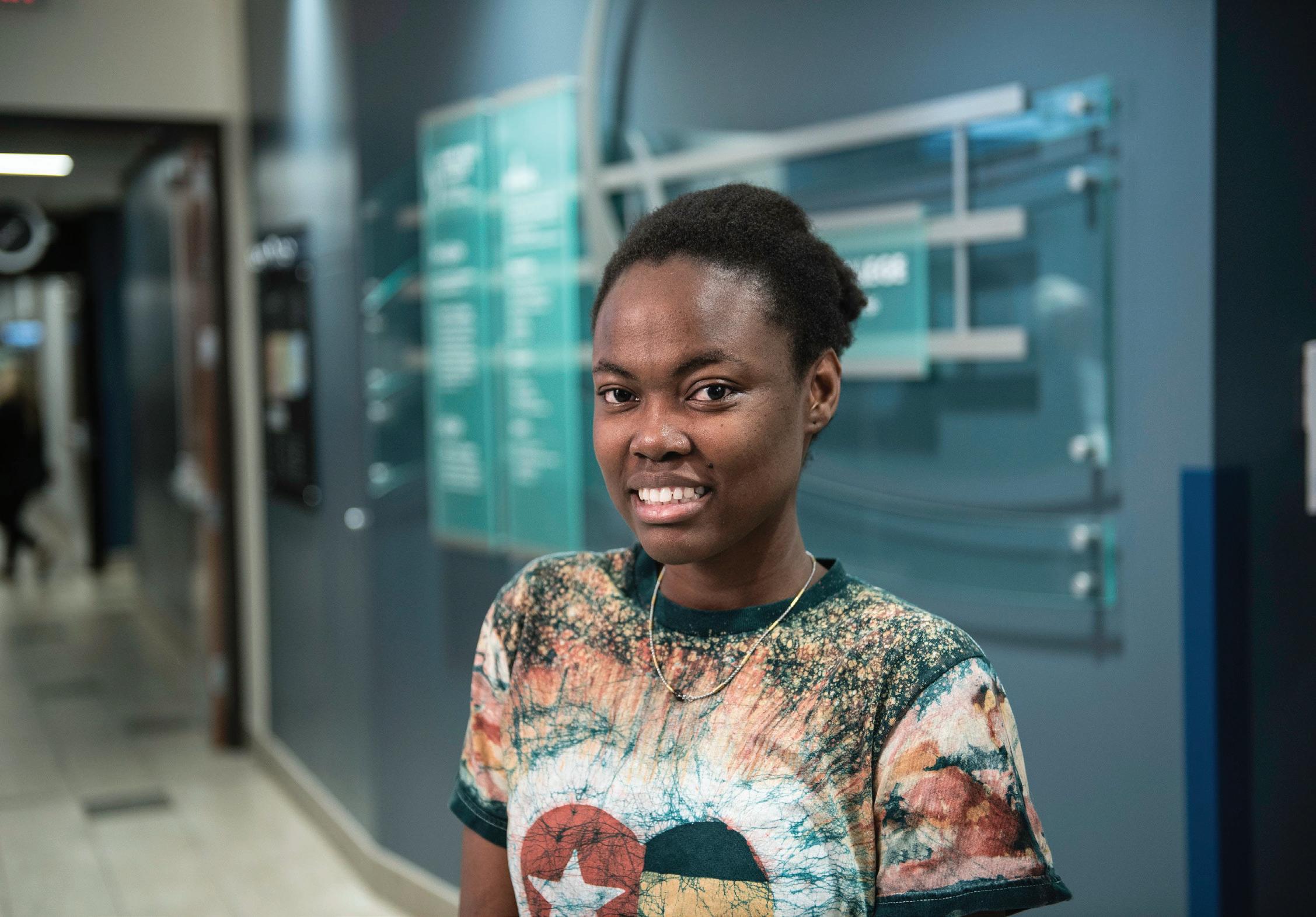



want to focus on that.”
The educational gap is
evidence that schools are not meeting the educational needs of children of color. “I want my children to know that the reason they are [successful] in their class is because of what we have at home.”
When African American children are confident in the classroom, they excel. Their contribution to classroom discussion can provide more nuance to the instruction. “That’s a part of education that I don’t think is lifted up,” Tezet says.
Ending victimization
Studying culture considers the journey of Africans in this
“We created tools. We created machines. We created everything this society needs to get its foot off our back… And it never gets acknowledged.”
country. “We created tools. We created machines. We created everything this society needs to get its foot off our back,” Tezet explains. “And it never gets acknowledged.”
As victims of racism, African Americans await acknowledgment of discrimination. Yet a presidential executive order ends DEI and rebukes “wokeness.”
“We can’t do it by racialization, because it just makes me angry to think about what you’ve done to my people,” says Tezet. So, waking those moving within a supremacist system from their slumber by acknowledging racism is not a priority.
“My job is to become conscious of who I am, what my mother and my father gave me. [I] think about what the creator has endowed in me in order to free myself and my people.”
Vickie Evans-Nash welcomes reader responses to vevans@ spokesman-recorder.com.


Anita Alexander
Torrion Amie
Holly Andersen
Nancy L. Beals
Jonathan Beck
Clara Boykin & Family
Gretchen Bratvold
Amanda Brinkman
Toweya Brown-Ochs
Benjamin F. Bryant
& Dr. Antusa S. Bryant
Deanna Callender
Shirlee L. Callender
Karl Cambronne
Liam Cavin
Janis Clay
Edward Coblentz
Coventry Cowens
Alvin E. Cunningham
Michael Davis
Victoria Davis
Marie Denholm
Michael Diehl
April A. Estes
George Ewing
Elizabeth Fealey
David Fettig
Readus Fletcher
Ken Foxworth
Michael Franks
Lee Friedman
Ella Gates-Mahmoud
Kimerlie Geraci
Erick Goodlow
Leota Goodney
Karlene Green
Pamela Hall-Clemens
Charles Hallman
Jeana Hamm
Hendon Group, Inc
Thomas Hill
Maxine & Kieran
Hughes
Ellen Guettler
& Ben Pofahl
Colnese Hendon
Connie Hudson
Angelo Hughes
Andrew Issacson
Katie Izzo
Ms. Jewelean Jackson
& Sir Steven C. Davis
Nina Johnson
Clarence Jones
Debra Jones
Shirley R. Jones
Julie July
Cynthia Kelly & Murry Kelly Jr.
Nathaniel Khaliq
Zena Kocher
Jimmy Lewis
Lisa Lissimore
Michele Livingston
Harlan Luxenberg
MRPP and Associate
Communications
Melanie Manaen
Rose McGee
Peter McLaughlin
Kyle Meerkins
Deborah Montgomery
Debbie Morrison
Marcia Murray
Mary K. Murray Boyd
Dan Ness
Sanda Noy
The O’Neill Family
Minister Dr. Ni Ora Hokes
Liz Oppenheimer & Jeanne Burns
Tamara Pollard
Ray Seville Productions
Mary Quinn McCallum
Dr. Mitchell Palmer
McDonald
Heidi Pemberton
Amy Pfankuch
Patty Ploetz
Catherine Pruszynski
Mark Ritchie
Lyn Rabinovitch & John Saxhaug
Augustus Ritemon
Carolyn Roberson
Winthrop & Barbara
Rockwell
M. Rebecca Ross
St. Paul Saints
Anura Si-Asar
Floyd Smaller
Chanda Smith Baker
South Hill Film
Ronald Spika
Stan Sandiford
Cyriaque Sukam
Timothy Sullivan
Heidi Swank
Gregory Tillman
Dotty Timmons
Nicholas Upton
Jason Walker
Dr. Betty Webb
Bill Wells
Tracy Wesley
Jeffery

Trump has launched the most dangerous attack on Black people since the 1960s.
By Keith Boykin
Not since the 1960s have Black Americans been the target of a greater political assault than the one we’re witnessing right now.
Donald Trump just installed a white supremacist at the State Department who openly acknowledged his belief that “white men must be in charge” of everything. He put in another at the Treasury Department who called to repeal the Civil Rights Act, “normalize Indian hate,” and eliminate Gaza, while bragging, “I was racist before it was cool.”
He put an unqualified Fox News host in charge of the entire Defense Department, even after the man was flagged by a service member as an “insider threat” and a possible white supremacist.
He’s installing a man to run the Department of Health and Human Services who believes that Black people should not be given the same vaccines as white people. And he gave unprecedented government access to an unelected white South African-born billionaire who performs Nazi salutes, tells far-right Germans to let go of their Hitler guilt, and is coercing Black leaders in South Africa because he thinks white people are being persecuted.
Racism is not a bug in Trump’s vision of America, it is a feature, and the racists are not trying to hide it. Just since Inauguration Day, we’ve seen white supremacists on the subway in Washington,
DC., Patriot Front members at the Jefferson Memorial, and “Proud Boys” marching through the streets of the capital.
And now a right-wing group has published the names and photos of mostly Black federal workers in an alarming new “DEI watchlist” that effectively puts a target on their backs.
These are the people Donald Trump is empowering.
Trump’s mission is to dismantle decades, if not centuries, of civil rights progress in government, business, academia and culture.
first time since 2021 without the message in the end zone, although the league unconvincingly denied that it was connected to Trump’s attendance at the game.
One year ago, I wrote a book called “Why Does Everything Have to Be About Race?” that warned about 5 features of modern racism: (1) erasing Black history, (2) centering white victimhood, (3) denying Black oppression, (4) promoting myths of Black inferiority, and (5) rebranding racism. Trump is doing all five in his
“Trump’s mission is to dismantle decades, if not centuries, of civil rights progress in government, business, academia and culture.”
first month in office.
By April Ryan
“This is only the beginning of a long fight,” according to Democratic North Carolina Congresswoman Alma Adams. She is addressing the Executive Order to pause federal loans and grants. There is an overwhelming concern in the Historically Black College and University (HBCU) community that many key programs focused on race and equity will be impacted.
Adams, a ranking member of a House Subcommittee on Higher Education and the founder and co-chair of the bicameral HBCU Caucus, issued a statement to Black Press USA once a federal judge temporarily blocked President Trump’s funding freeze. Adams, whose state houses 11 HBCUs, the largest number in any given state, says, “President Trump is dismantling equity in education with the stroke of a pen by rescinding federal initiatives for MSIs.”
HBCUs are 200-year-old institutions that are one of the largest segments of this nation to create the Black middle class. Adams passionately expressed, “He’s [Presi-
dent Trump] jeopardizing the futures of countless students.”
According to the Trump White House, the pause is meant as a review period for federal loans and grants to organizations and agencies. A White House official assured this reporter that Historically Black Colleges and Universities are fine. However, if African American history or “woke” programs are taught with federal funds, those monies will be extracted from the school and or program.
“Trump is jeopardizing the futures of countless students.”
Walter Kimbrough, the interim president of Talladega College, exclusively told Black Press USA the initial announcement of the funding freeze “was a shock to the HBCU community, which has continued to enjoy broad, bipartisan support.” However he sharply questioned “how can you be an HBCU without African American history?
Trump White House Deputy Chief of Staff for Policy Ste-
phen Miller also gave the press an example of teaching “critical race theory,” which he says would lose the federal funding. “The pause on the federal loans and grants will involve “a politically appointed individual…who simply reviews and approves the expenditure so that we have democratic control over the operations of government,” emphasized Miller who further claimed, “This doesn’t impact any programs that Americans rely on.” Adams, a former alumni of North Carolina A&T and a former professor of an HBCU, believes this examination of federal funding is ”putting HBCUs, which are already underfunded but vital to our communities, directly in harm’s way.” Meanwhile, Kimbrough wants the 111 presidents of the nation’s Historically Black Colleges and Universities to meet with President Trump.
“We are eager to meet with the new administration to remind them of the consequential role HBCUs make to our nation, and to solicit their support and further investment.”
April Ryan is an NNPA Newswire reporter.
Public ‘watch list’ targets Black federal workers Trump and Musk continue assault on diversity
By Stacy M. Brown
In government, he’s rescinding executive orders that have protected Black people since the 1960s and trying to eliminate the constitutional protection of birthright citizenship from the 1860s.
In business, he’s pressuring companies to end their diversity, equity and inclusion (DEI) programs, and far too many are willingly responding with “anticipatory obedience.”
In academia, he’s threatening to investigate colleges and universities with DEI programs and withhold federal funding for schools that promote racial justice. Now Rutgers University has canceled an HBCU conference and Harvard has laid off the staff of its Slavery Remembrance Program.
And in the culture, even the NFL removed its “End Racism” sign at the Super Bowl, the

submissions@spokesman-recorder.com
submissions@spokesman-recorder.com
ads@spokesman-recorder.com
submissions@spokesman-recorder.com.
His Defense Department banned Black History Month events and removed a video about the Tuskegee Airmen, while the Veterans Affairs office told a Black official not to mention DEI during an MLK event, all of which erase Black history.
His sweeping pardons for hundreds of January 6 insurrectionists, lesser known pardons for two white police officers who murdered a Black man, and his campaign to bring back Confederate names on military bases all center a racist misperception of white victimhood.
His rescission of decadesold civil rights executive orders fuels right-wing denial of Black oppression. His reckless attack on DEI immediately after the DC plane crash promotes discriminatory myths of Black inferiority.
And his coded language gaslighting us about “meritocracy,” from a man who was the first president elected with no experience in government or military and then became the first criminal to be elected, represents a stunning example of rebranding racism.
So why isn’t anybody stopping him? How is he getting away with this?
Because Trump’s Republican Party now controls all three branches of government. The executive branch is run by Trump and his minions. Both houses of Congress, the legislative branch, are controlled by Republicans. And six of the nine members of the Supreme Court, the leaders of the judicial branch, were appointed by Republican presidents.
This is why many of us have been screaming for years that elections have consequences, and when we don’t vote in all federal, state and local elections, we lose.
But as a Black American, it’s
A right-wing nonprofit backing Donald Trump has published the names and photos of more than 50 federal employees, many of them Black, in a move that civil rights advocates warn could endanger lives and deepen systemic discrimination in government agencies. The “DEI bureaucrat watch list,” compiled by the American Accountability Foundation, identifies workers based on their support for diversity, equity and inclusion (DEI) initiatives, past social media activity, or donations to Democratic candidates.
The employees — many of them serving at the Centers for Disease Control and Prevention (CDC), the National Institutes of Health (NIH), and other federal health agencies — have been labeled by the organization as “woke DEI devotees” and targets for termination under Trump’s administration.
The group claims these individuals are “anti-American bad actors.” The organization has circulated dossiers detailing their purported offenses, which include reposting content about racial disparities in health care or making critical remarks about Trump’s policies.
Supporters of the targeted workers have expressed alarm, warning that the public identification of government employees in this manner could lead to harassment, violence, and job loss. One federal employee whose name appeared
on the list told The New York Times, “My name and picture are out there. In 2025, it’s very simple to Google and look up someone’s home address. What happens next?”
Another individual described the move to NBC News as “psychological warfare” against civil servants simply trying to do their jobs.
The list is part of a broader right-wing effort to dismantle diversity programs and purge public institutions of individuals seen as obstacles to Trump’s agenda. The American Accountability Foundation, founded in 2020 to undermine the Biden-Harris administration, has ramped up its efforts since Trump’s return to power along with Elon Musk.
“Trump’s attacks on diversity, equity, and inclusion aren’t about policy. They are a sanitized substitute for the racist comments that can no longer be spoken openly.”
The organization has been financially backed by groups like the Heritage Foundation, which authored the Project 2025 blueprint that outlines an aggressive strategy to reshape the federal government along far-right ideological lines.
Thomas Jones, president of the American Accountabil-
hard not to reach the conclusion that white America would rather enable a destructive fascist to ruin the country than relinquish its unearned white privilege. The majority of white voters supported Donald Trump in all three of his presidential campaigns. Black people did not. We and the Indigenous have been the conscience of the country since the founding of the republic, but we are not the majority. We’ve done our job and will continue to fight for justice, but now it’s time — in fact, it’s well past time — for white people to put up or shut up about democracy.
ity Foundation, admitted in an interview with The New York Times that his group did not attempt to verify the employment status of those it targeted or reach out for comment before compiling the list. “I’m busy. I’ve got a lot of stuff to do,” Jones stated when asked about the lack of verification efforts.
Civil rights leaders and legal experts say the move reflects a growing trend in which Trumpaligned organizations seek to eliminate diversity-focused policies and intimidate those advocating for equity. “This is a scare tactic to intimidate people from doing their jobs,” said Dr. Georges Benjamin, executive director of the American Public Health Association, in comments reported by NBC News. “It’s clear racism.”
The federal employees on the list are not high-level policymakers but career professionals in public health, research, and regulatory affairs. Some were singled out for social media posts made years before they entered government service.
“This is a return to blacklisting,” said Timothy Welbeck, director of Temple University’s Center for Anti-Racism, in comments reported by NBC News. “From McCarthy-era tactics to modern-day doxxing, the goal remains the same: silence opposition and dismantle diversity efforts.”
Stacy Brown is an NNPA Newswire senior national correspondent. Connect with her on social media at @StacyBrownMedia.
Keith Boykin is a New York Times–bestselling author, TV and film producer, and former CNN political commentator. He is collaborating with Word In Black on the series “Black Vote, Black Power,” which examines the issues and what’s at stake for Black America.

PHONE: 612-827-4021
FOR BILLING
INQUIRIES & TEARSHEETS
PLEASE CONTACT ACCOUNTING DEPT
BILLING@SPOKESMAN-RECORDER.COM
PROBATE NOTICE FLAT RATE: $215 2 WEEK RUN
Please
3.
The Answer is your written response to the Plaintiff’s Complaint. In your Answer you must state whether you agree or disagree with each paragraph of the Complaint. If you believe the Plaintiff should not be given everything asked for in the Complaint, you must say so in your Answer.
4. YOU WILL LOSE YOUR CASE IF YOU DO NOT SEND A WRITTEN RESPONSE TO THE COMPLAINT TO THE PERSON WHO SIGNED THIS SUMMONS. If you do not Answer within 20 days, you will
case. You will not get to tell your side of the story, and the Court may decide against you and award the Plaintiff everything asked for in the complaint. If you do not want to contest the claims stated in the complaint, you do not need to respond. A default judgment can then be entered against you for the relief requested in the complaint.
5. LEGAL ASSISTANCE.
6.
Dated: 12/17/2024



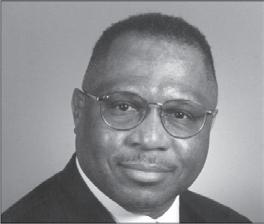

From Ads Department/MN Spokesman-Recorder
PHONE: 612-827-4021
FOR BILLING INQUIRIES & TEARSHEETS PLEASE CONTACT ACCOUNTING DEPT BILLING@SPOKESMAN-RECORDER.COM
SUMMONS 3 WEEK RUN FLAT RATE: $320
Please Note: New email address for all future ads is ads@spokesman-recorder.com
The MSR handles billing digitally. This means you will get e-tears and
Minnesota Spokesman-Recorder February 13, 2025
By Jasmine McBride Associate Editor
Sister Spokesman’s February — Black History Month — event brought dozens of attendees together over the theme of “Love Connections: Embrace Self-Love & Build Great Relationships”
Hosted at the Life Source building in North Minneapolis, attendees gathered as a tracklist of old-school R&B and neosoul tunes set the tone. Guests were surrounded by pink and
red decor, as scattered goodie bags and bowls of treats awaited their indulgence. Vendors brought in wellness services like massages, vaginal health products, and feel-good apparel to stimulate the air of self-care.
Love and relationship coach Ericka Mitchell-Okatah keynoted the event with her expertise in using the law of attraction to build fruitful relationships with self, as well as others. She engaged guests to reflect on the beliefs they have around themselves.
“What is a limitation you
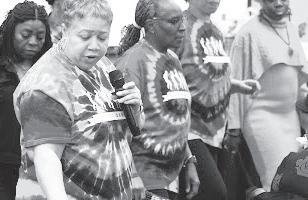
Continued from page 14
evolves into a family-centered celebration,” she added.
Tuscaloosa has proven to be an ideal place to host the six day tournament and related events.
The commissioner said, “You want to have a place that’s intimate enough for you to be able to build community. We’ve talked about trying to host all of our championships and spaces where we have at least one or two institutions. Our newest member is in Tuscaloosa.
“I was talking to someone
Continued from page 14
to coach. I want to be able to impact lives the same way that my coaches impacted mine, and it still allows me my competitive nature and love for the game to still be connected.
“Furthermore, being a Black female coaching women is both a privilege and an honored responsibility,” said Brown.
about what I call my ‘5Cs’ — it’s a city, a conference and a college collaborating for the community,” stressed Baker Barnes.
More importantly, the post-season basketball tournament will be a boost to the area’s economic fortunes. “We’re bringing 26 teams — 13 men’s basketball teams, 13 women’s basketball teams — to the city for a span of six days,” she stressed. “We’re staying in the hotels. We’re spending money.”
In a couple of weeks, all eyes will be heading south as the HBCUAC kicks off this year’s March Madness, Black college style.
believe about yourself?” she asked, passing around the mic. Mitchell-Okatah explained the value in mirror-work, a concept that fulfills the idea that the narrative you hold about yourself shapes the way social experiences transpire. “I want you to take time to stand in the mirror, look at yourself fully, and empower yourself.
“Keep positive energy alive for lasting connections.”
“Say nice things out loud, everyday if you have to, and notice how you feel. What we say to ourselves sets the tone for our energy, and therefore what we attract.”
When it comes to mastering self-love and attracting fulfilling relationships, Mitchell-Okatah said there are five areas to develop: awareness of energy; self-love practices; visualization for manifestation; existing relationships; and maintenance
“We want to sell the place out. We want people in the stands to watch some really good basketball.”
“I’m excited,” said Baker Barnes. “[Stillman College has] a fantastic facility that… we want to pack out. We want to sell the place out. We want people in the stands to watch some really good basketball, and we’re so excited about it and looking forward to all that comes with championship play.”
Charles Hallman welcomes reader comments to challman@ spokesman-recorder.com.
of progress. “Understand the foundation for attracting love,” said Mitchell-Okatah. “Keep positive energy alive for lasting connections.”
To emphasize positive energy, Tina “Lady of Line Dance” Jackson got attendees moving and on their feet to shake any leftover stagnant energy (as many partook in the kitchen’s lemon cake and heart-shaped donuts after lunch, getting real comfortable in those chairs).
For over 15 years, Jackson has united people through soul line dancing. Known for her engaging, communityfocused teaching style, Jackson’s interactive session concluded the event by highlighting the role movement plays in fostering connections and lightening the mood (and shaking some of those treat calories off).
Overall, we all need a little more love in our lives. Seeing local women of the community come together over the discussion of expanding one’s capacity for love was a won-
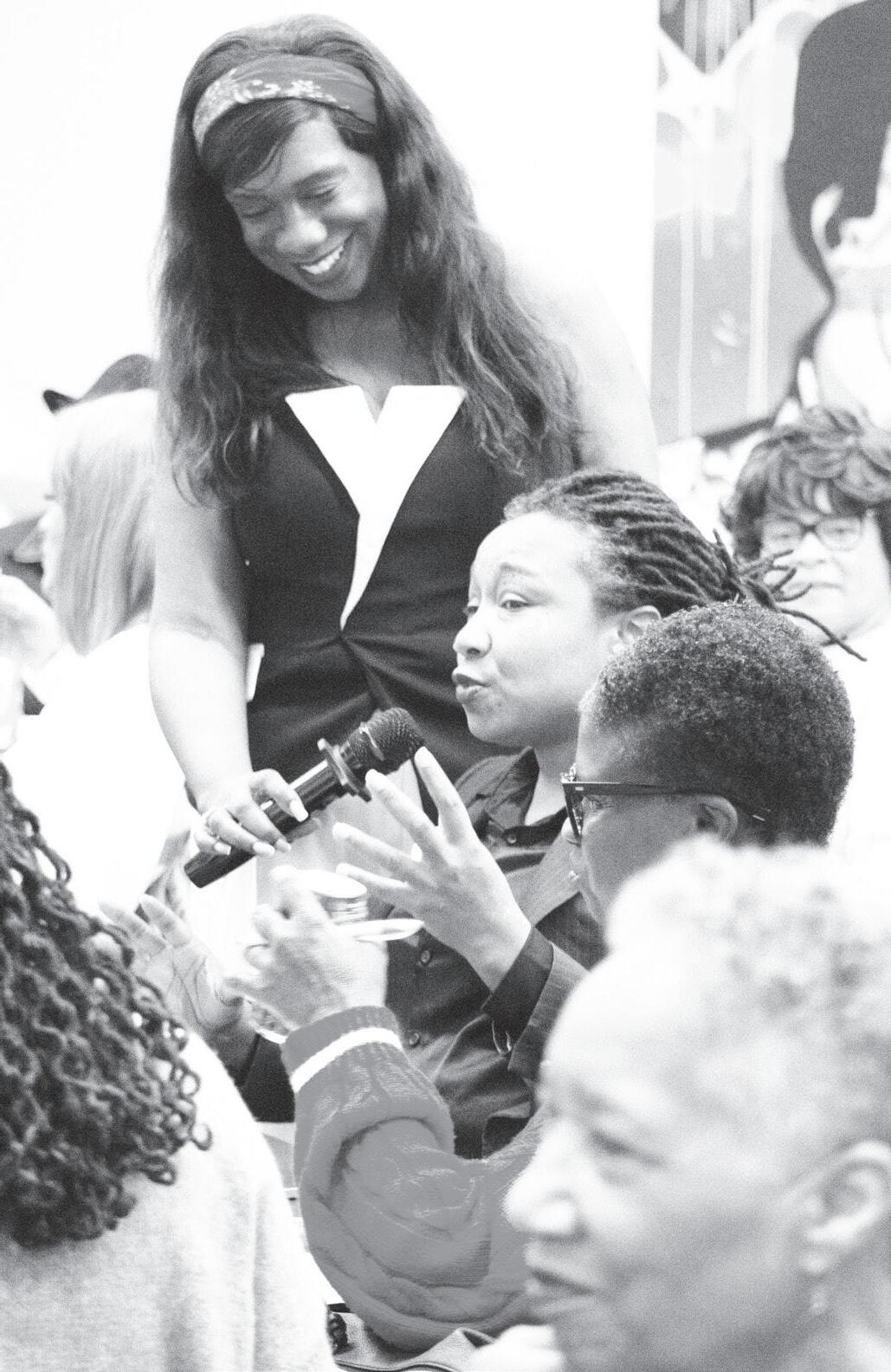
derful way to make a Sister Spokesman event expressive of the nature of Black History Month. Our ancestors, in community, activated these very tools of resilience through past times of injustice, trials and tribulations.
McBride welcomes reader responses to jmcbride@ spokesman-recorder.com.
“I’ve been blessed to be able to say that this is not just a job,” she pointed out. “This is my purpose, and I recognize the fact that I am a Black coach in a profession… The responsibility that I feel not only to all the players, but certainly to the African American players, is a big one, to make sure that I’m equipping them and mentoring for what next, being someone that they could look at and emulate.
Continued from page 14
led the Polars to Class AA runner-up finishes in 1984 and 1985, while Tim Bellfield, Bruce Smith and Tim Lloyd led the Polars to fourth place in 1986.
Though North missed the state tournament in Queen’s
“If you talk to Shannon, that’s going to be hers as well. I’ve taken a huge responsibility to make sure that I’m sort of taking the baton from their parents and helping finish the
job and equip [the players] for the next phase of life. That’s bigger than basketball, and that’s my mentality.
“We understand the weight of that,” said Brown. “The reality of it is in this profession sometimes with Black coaches, if you don’t succeed, you’re not often given another chance.
“So, we understand that for the ones coming up behind us, we need to succeed.”
Charles Hallman welcomes reader comments to challman@ spokesman-recorder.com.
final two seasons, he had talented players. Both the 1987 team featuring Dan Bannister, Roderick Wade, Derek Rueben, Marc Riley and Marvin Singleton, and the 1988 team featuring Rueben, Riley, John Baker, Jay Hall and Makram El-Amin, finished the regular season as the No.1 team in the state. Overton (1981), McNeal (1985) and Rueben (1988) were each named Mr. Basketball. Queen’s most successful player, Ben Coleman, was a 1979 Mr. Basketball finalist who went on to star at the University of Minnesota, University of Maryland, and the NBA.
As athletic as I was, I wasn’t prepared or knew how to go to the next level, and he certainly brought that out of me.
Dr. Mitchell Palmer McDonald welcomes reader comments to mcdeezy05@gmail.com.


@spokesman-recorder.com or call 612-827-4021
“[It] wasn’t always great for me,” stressed Meyers Drysdale, “but I look back now, and I think how hard he was on me because he saw what I could be, and I think the challenges that he gave me made me a better player, made me a better person.”
Washington’s only season as coach he finished 18-4. Sadly, there’s little mention of Kenny Washington as the first Black women’s basketball coach at UCLA other than a short paragraph on Wikipedia.
“I think what he established was because of his relationship with Coach
Wooden and being a player and being on those championship teams in those early days,” added Meyers Drysdale. “I think it’s huge to say that’s kind of where really the women’s basketball program started. Billie Moore [who succeeded Washington] took it to another level…and winning the championship in 1978 with the players that we did have. But you have to look at how we really started at the grassroots [under Washington].
“I think it’s huge to say that’s kind of where really the women’s basketball program started.”
“We led the nation in field goal percentage, and our tallest player was 5-11, I think. And we led the league in rebounding.”
Coach Kenny Washington’s legacy should be more widely recognized. “It wasn’t just about the physical skills which he helped teach us and understand the fundamentals of whether it was defense or blocking out or setting a screen,” said Meyers Drysdale. “All those little details, and if you don’t pay attention to the details, you’re not going to be successful.
“I thought his understanding of the game was so complete. I’ll be forever grateful… he taught me the game.”
Charles Hallman welcomes reader comments to challman@ spokesman-recorder.com.

By Charles Hallman Sports Columnist
uscaloosa, Alabama
once again will be the NAIA Black college basketball epicenter when the southern city of over 11,000 hosts the 2025 HBCU Athletic Conference (HBCUAC) Men’s and Women’s Basketball Championships February 25 through March 2 at Stillman College’s Birthright Alumni Hall.
Stillman College is the newest HBCUAC member and served as host of last season’s post-season tourney.
“This event is about more than basketball. It’s about community and building strong bonds in the cities where we host our championships,” said Commissioner Dr.
Kiki Baker Barnes during the January 22 press conference that featured herself, Stillman College President Dr. Yolanda Page and other city and school officials.
Said Page, “We continue to be excited about this partnership between Stillman College, Visit Tuscaloosa, and the HBCU Athletic Conference. This vision demonstrates the strength and the visionary efforts of women leading Stillman, leading Visit Tuscaloosa, and leading the HBCU Athletic Conference who are very strong, visionary women.”
After successfully hosting the 2024 basketball tournament, the conference announced that Visit Tuscaloosa, the city’s tourism and sports organization, had been awarded the bid to host the tournament for the next two years.
The MSR recently talked
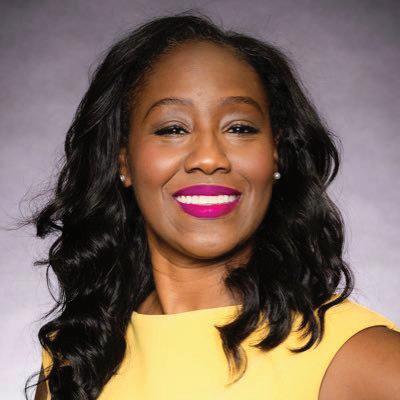
to Dr. Baker Barnes on Zoom.
“We’re excited this year that we’ll be looking at launching a couple of new initiatives as
a part of the championship experience,” noticed the commissioner.
These new initiatives in-
To be a Black woman
clude the Inaugural HBCUAC Cheer and Dance Showcase, where fans will be treated to captivating halftime performances, and the inaugural Family Reunion Community Tailgate, a new tradition introduced and designed to amplify school spirit and community involvement.
“We are really, really excited about these two elements, and what we believe it is going to do in terms of elevating the brand in the community,” said Baker Barnes.
The HBCU Athletic Conference is the only all-HBCU conference in the NAIA. Under Baker Barnes’ leadership, the league has grown from six schools in 2022 to 13 now.
“As our conference has grown to 13 member schools, it was critical to ensure our basketball championship ■ See BARNES on page 13
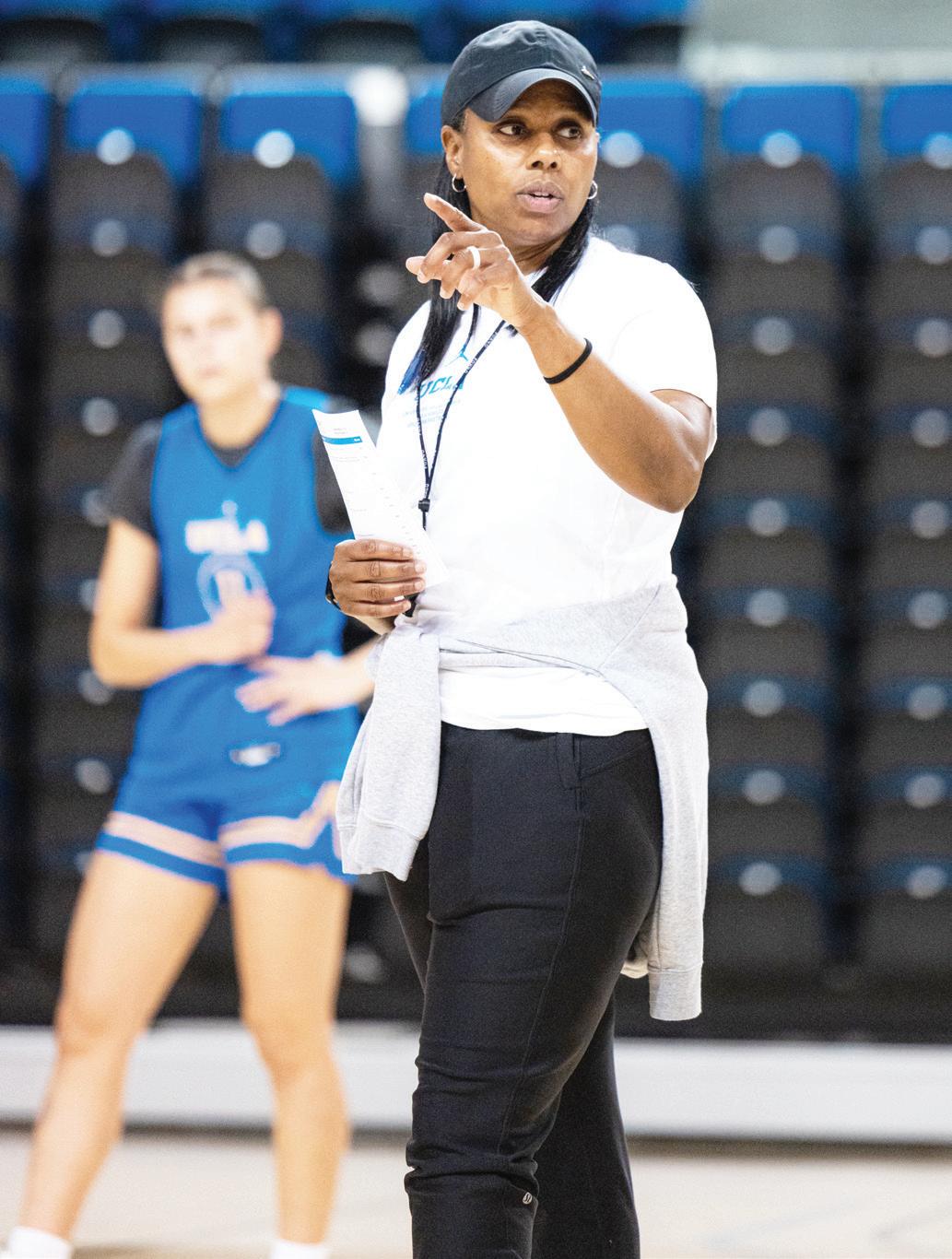

ouis Boone, Minneapolis Washburn (1979-1998) Boone, behind the outstanding play of Eric Minea Aaron Boone, Akeem Carpenter, Byron Suttles and Adrian Patterson, led the Millers to the 1994 Class AA state championship. Washburn was always in the mix come tournament time.
Other outstanding players coached by Boone include Brian Carpenter, Jerome Graham, Adam Boone, Richard Green and Jason Collins
Levain Carter, Minneapolis Central, Minneapolis South (1976-1991) Carter had plenty of success at both schools. At Central, Carter led the Pioneers to a 1977 Class AA state consolation finish with players Russell Gary, Andra Griffin and Al Nolen Sr. leading the way.
he wasn’t the head coach, but it was Tasha Brown’s voice that rang loud and clear and got the players’ full attention as she implored the nation’s numberone women’s college basketball team to do better on defense.
Once a head coach herself, Brown is in her fifth season as UCLA assistant coach. We chatted afterwards at the school’s practice facility during our recent trip to Los Angeles. The Bruins then were preparing to play Minnesota in a couple of days.
“We have the freedom to be as vocal as we want to be, stop practice when we want to, administer accountability if we need to, typically on the defensive side of the ball,” said Brown proudly. “You’ll hear me being the most vocal.”
“All of our assistant coaches we have are very active in practice,” continued Brown.
“The one thing about Coach Cori [Close] is that she doesn’t have an ego. She has hired great teachers, great coaches, and she wants us to head coach our areas,” noted the veteran coach.
“I’m sort of taking the baton from their parents and helping finish the job and equip them for the next phase of life.”
Brown got her coaching start at her alma mater St. Ambrose (Iowa) in 1997, where she played college basketball and earned a degree in mathematics. She also played two of her four years of college hoops at Illinois Central College, then went to Southwest Missouri State for a season before finishing up her career at St. Ambrose.
She has amassed over two
decades of coaching experience, including four seasons as Western Michigan head coach, and assistant stints at Rice, Cincinnati, Wisconsin, UC-Santa Barbera, Bradley, Dayton, and now at UCLA.
When asked how it feels to be coaching a number-one team that at the time was undefeated, she said, “You know that doesn’t happen for very many people in your career. It is amazing to be able to be a part of a number-one team.
“I think the only thing that overshadows that is the fact that we just have some great young women in this program,” she pointed out.
Brown and Associate Head Coach Shannon Perry-LeBeauf are the only Black women on the Bruins coaching staff.
“I love the game,” Brown admitted, “and I’ve always kind of viewed myself as a teacher. So, coming out of college, I want
They duplicated the feat in 1979 behind the outstanding play of Pedro Perkins, Melvin Armstrong and Jeff Byrd At South, Carter experienced more success with another Class AA state tournament, led by Corey Frazier, Steve Seawright and Russell Wilson
Other outstanding players coached by Carter include Ron “Bud” Gross, David Holmgren, Peter Najarian, Curtis Travis and Russell Smith
Robin Ingram, Minneapolis North (1988-1999) In 1990 Ingram, along with the outstanding play of David Dennis, Taj Rich, Marvin Walker, Sean Strickland, and Charles Fraizer, led the Polars to a Class runner-up finish in the state tournament.
Ingram, who also coached golf at North, led the Polars to three consecutive state championships from 1995-97, while playing in three different tournament formats led by
Khalid El-Amin, Ozzie Lockhart and Jabbar Washington
Jerome Hubbard and Kerek Taylor led the Polars to their fourth consecutive state tournament appearance in 1998. The following season Tedkye Bellfield, Rico Bellfield, Daakaar Bellfield and David Roddy made it five consecutive state tournaments in 1999.
El-Amin, now a coach at Anoka Ramsey Community College, was Mr. Basketball and McDonald’s All-American in 1997.
Tony Queen, Minneapolis North (1976-1988)
Queen had an abundance of talent during his tenure at North to go along with seven consecutive state tournament appearances from 1980-1986
The 1980 state championship team led by Ted Bellfield, Jay Rundles and Redd Overton got North’s run going. Harlan Hill, Troy Smith, DeNorris West, Darryl Carr,
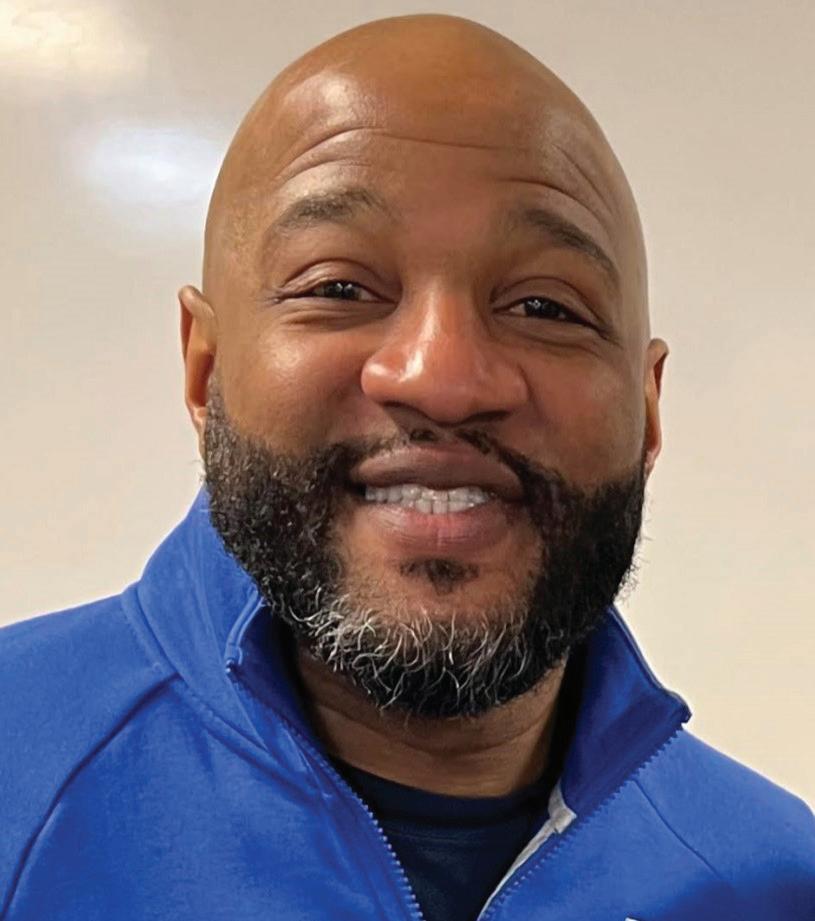

n the annals of UCLA athletics history, there are two Kenny Washingtons unrelated to each other. One was a football player, the other an overlooked women’s basketball coach.
The first Kenny Washington (1918-1971) was a college football and baseball teammate of Jackie Robinson. He is a 1956 College Football Hall of Fame and 1984 UCLA Hall of Fame inductee.
Washington, who died from heart and lung problems at age 52, was the first Black player to sign an NFL contract in the post-World War II era and was UCLA’s first consensus All-American.
Who is the other Kenny Washington? This was the subject of my quick Black history quiz I conducted while on the UCLA campus a couple of weeks ago.
“He was a football player,” responded a Black female with a group of fellow Black students. When I corrected her, she said, “Oh wow, I didn’t know that. He must have been really good.”
This Kenny Washington was from Beaufort, South Carolina and attended UCLA in the early 1960s where the 6’3” Black player became a key member of John Wooden’s first two NCAA championship teams in 1964 and 1965 and made the 1965 All-Final Four team.

He was later drafted by San Francisco in the eighth round of the 1966 NBA Draft but never played in the league. He did play pro ball in Europe and was the second leading scorer on the 1970 U.S. team that played in the 1970 FIBA World Championship.
But what Washington did after playing basketball is overlooked in UCLA basketball history. He was the first head coach in the school’s women’s basketball history (1974-75), and the first Black head coach.
“I didn’t know that,” said a Black man standing in line for player autographs after the Feb. 2 UCLA-Minnesota contest at Pauley Pavilion when told of Washington’s place in history.
“He was a disciplinarian,” recalled Ann Meyers Drysdale, who played on that Washington team. “I mean, he did everything that Coach Wooden taught—all our drills were the same.”
Admitted Meyers Drysdale, who later would be inducted into Naismith Basketball Hall of Fame (1993) and see her UCLA jersey retired in 1990,
“I was a freshman, so I didn’t know anything. He expected a lot out of us. He taught me a lot, and he challenged me a lot.
from 1981-1983.